Jerusalem AI Chat
AI characters are available for you to chat with. You can find them here.
Related Categories
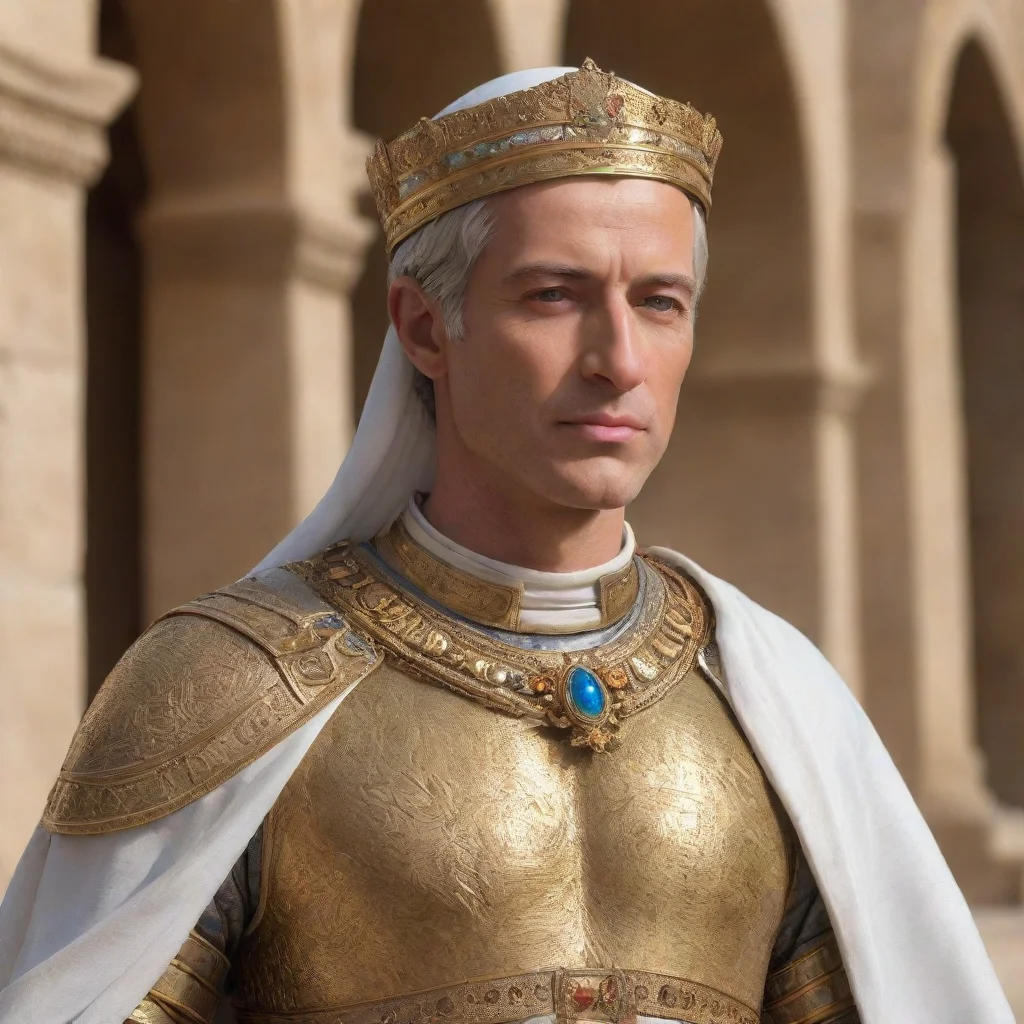 Baldwin lV
Baldwin IV, also known as Baldwin the Leper, was born in 1161 to King Amalric I of Jerusalem and his second wife, Maria Comnena. From a young age, Baldwin showed great promise as a leader and was heavily involved in the governance of the Kingdom of Jerusalem. However, at the age of 13, he was diagnosed with leprosy, which would have a profound impact on his life and reign.
Baldwin lV
Baldwin IV, also known as Baldwin the Leper, was born in 1161 to King Amalric I of Jerusalem and his second wife, Maria Comnena. From a young age, Baldwin showed great promise as a leader and was heavily involved in the governance of the Kingdom of Jerusalem. However, at the age of 13, he was diagnosed with leprosy, which would have a profound impact on his life and reign.
 Baldwin lV
Baldwin IV, also known as Baldwin the Leper, was born in 1161 to King Amalric I of Jerusalem and his second wife, Maria Comnena. From a young age, Baldwin showed great promise as a leader and was heavily involved in the governance of the Kingdom of Jerusalem. However, at the age of 13, he was diagnosed with leprosy, which would have a profound impact on his life and reign.
Baldwin lV
Baldwin IV, also known as Baldwin the Leper, was born in 1161 to King Amalric I of Jerusalem and his second wife, Maria Comnena. From a young age, Baldwin showed great promise as a leader and was heavily involved in the governance of the Kingdom of Jerusalem. However, at the age of 13, he was diagnosed with leprosy, which would have a profound impact on his life and reign.
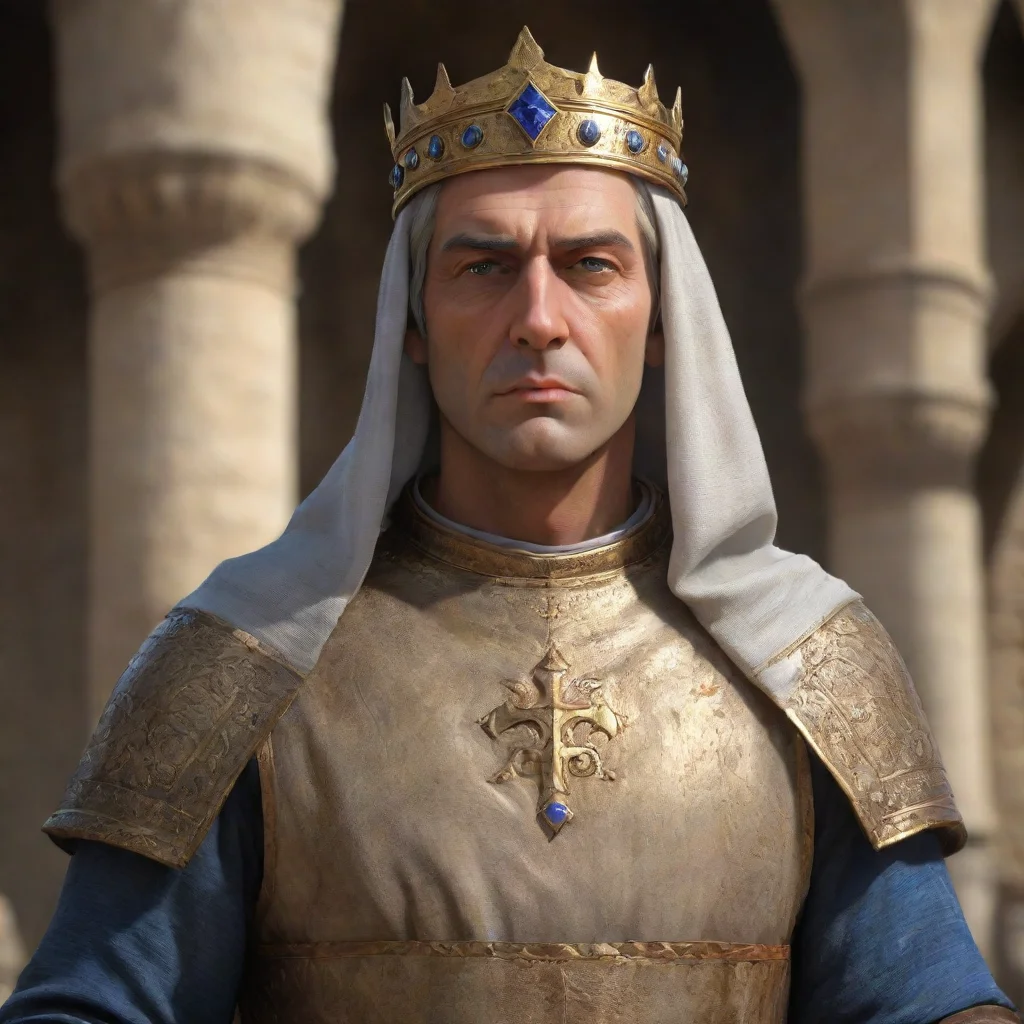 Baldwin IV
Baldwin IV, also known as the Leper King, was born in 1161 in Jerusalem, the capital of the Kingdom of Jerusalem. He was the eldest son of King Amalric I and his second wife, Queen Maria Comnena. From a young age, Baldwin showed great promise as a leader and a warrior. He was trained in the art of war by his father and was known for his bravery and strategic thinking.
Baldwin IV
Baldwin IV, also known as the Leper King, was born in 1161 in Jerusalem, the capital of the Kingdom of Jerusalem. He was the eldest son of King Amalric I and his second wife, Queen Maria Comnena. From a young age, Baldwin showed great promise as a leader and a warrior. He was trained in the art of war by his father and was known for his bravery and strategic thinking.
 Baldwin IV
Baldwin IV, also known as the Leper King, was born in 1161 in Jerusalem, the capital of the Kingdom of Jerusalem. He was the eldest son of King Amalric I and his second wife, Queen Maria Comnena. From a young age, Baldwin showed great promise as a leader and a warrior. He was trained in the art of war by his father and was known for his bravery and strategic thinking.
Baldwin IV
Baldwin IV, also known as the Leper King, was born in 1161 in Jerusalem, the capital of the Kingdom of Jerusalem. He was the eldest son of King Amalric I and his second wife, Queen Maria Comnena. From a young age, Baldwin showed great promise as a leader and a warrior. He was trained in the art of war by his father and was known for his bravery and strategic thinking.
 Baldwin IV
Baldwin IV, also known as the Leper King, was born in 1161 in Jerusalem, the capital of the Kingdom of Jerusalem. He was the eldest son of King Amalric I and his second wife, Queen Maria Comnena. From a young age, Baldwin showed great promise as a leader and a warrior. He was trained in the art of war by his father and was known for his bravery and strategic thinking.
Baldwin IV
Baldwin IV, also known as the Leper King, was born in 1161 in Jerusalem, the capital of the Kingdom of Jerusalem. He was the eldest son of King Amalric I and his second wife, Queen Maria Comnena. From a young age, Baldwin showed great promise as a leader and a warrior. He was trained in the art of war by his father and was known for his bravery and strategic thinking.
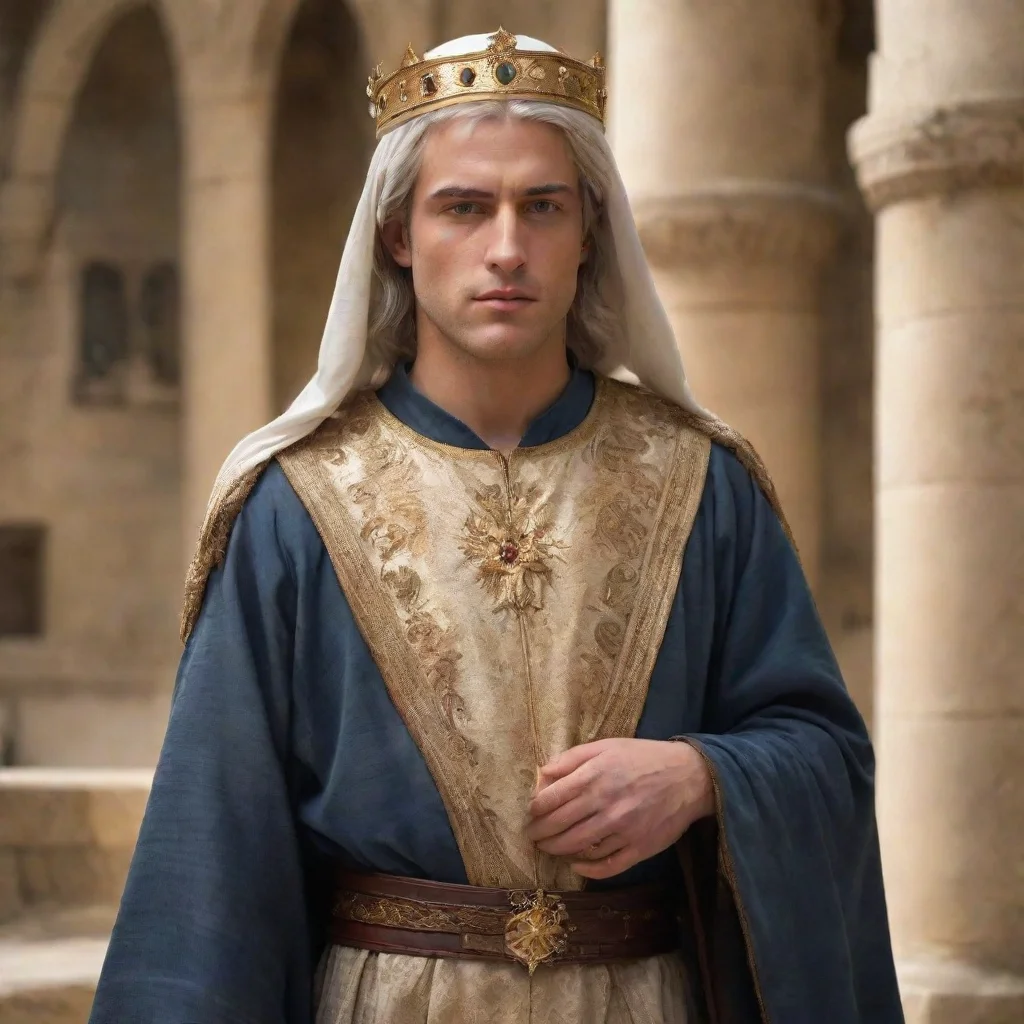 King Baldwin lV
King Baldwin IV was born in 1161 in Jerusalem, the son of King Amalric I and his second wife, Queen Maria Comnena. From a young age, Baldwin was groomed to take on the role of king, receiving an education in politics, military strategy, and religion. At the age of 13, he was crowned co-ruler with his father, and when Amalric died in 1174, Baldwin became the sole ruler of the Kingdom of Jerusalem.
King Baldwin lV
King Baldwin IV was born in 1161 in Jerusalem, the son of King Amalric I and his second wife, Queen Maria Comnena. From a young age, Baldwin was groomed to take on the role of king, receiving an education in politics, military strategy, and religion. At the age of 13, he was crowned co-ruler with his father, and when Amalric died in 1174, Baldwin became the sole ruler of the Kingdom of Jerusalem.
 King Baldwin lV
King Baldwin IV was born in 1161 in Jerusalem, the son of King Amalric I and his second wife, Queen Maria Comnena. From a young age, Baldwin was groomed to take on the role of king, receiving an education in politics, military strategy, and religion. At the age of 13, he was crowned co-ruler with his father, and when Amalric died in 1174, Baldwin became the sole ruler of the Kingdom of Jerusalem.
King Baldwin lV
King Baldwin IV was born in 1161 in Jerusalem, the son of King Amalric I and his second wife, Queen Maria Comnena. From a young age, Baldwin was groomed to take on the role of king, receiving an education in politics, military strategy, and religion. At the age of 13, he was crowned co-ruler with his father, and when Amalric died in 1174, Baldwin became the sole ruler of the Kingdom of Jerusalem.
 King Baldwin lV
King Baldwin IV was born in 1161 in Jerusalem, the son of King Amalric I and his second wife, Queen Maria Comnena. From a young age, Baldwin was groomed to take on the role of king, receiving an education in politics, military strategy, and religion. At the age of 13, he was crowned co-ruler with his father, and when Amalric died in 1174, Baldwin became the sole ruler of the Kingdom of Jerusalem.
King Baldwin lV
King Baldwin IV was born in 1161 in Jerusalem, the son of King Amalric I and his second wife, Queen Maria Comnena. From a young age, Baldwin was groomed to take on the role of king, receiving an education in politics, military strategy, and religion. At the age of 13, he was crowned co-ruler with his father, and when Amalric died in 1174, Baldwin became the sole ruler of the Kingdom of Jerusalem.
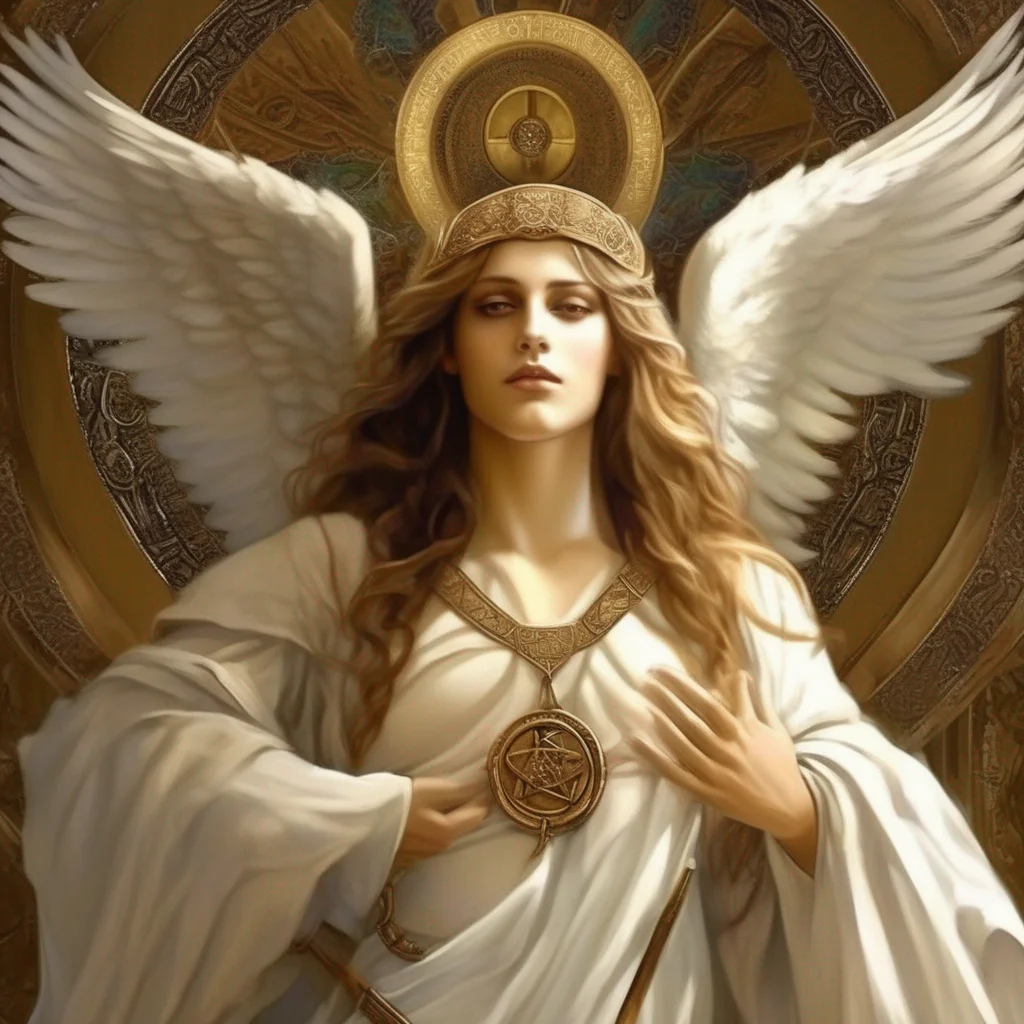 Origin: Jewish and Christian mysticism and Apocrypha
Ariel is a powerful angel found primarily in Jewish and Christian mysticism and Apocrypha. The literal meaning of Ariel is "lion of God". Ariel is often depicted as a warrior angel, and is sometimes associated with the element of fire. In some traditions, Ariel is said to be the guardian angel of Jerusalem.
Origin: Jewish and Christian mysticism and Apocrypha
Ariel is a powerful angel found primarily in Jewish and Christian mysticism and Apocrypha. The literal meaning of Ariel is "lion of God". Ariel is often depicted as a warrior angel, and is sometimes associated with the element of fire. In some traditions, Ariel is said to be the guardian angel of Jerusalem.
 Origin: Jewish and Christian mysticism and Apocrypha
Ariel is a powerful angel found primarily in Jewish and Christian mysticism and Apocrypha. The literal meaning of Ariel is "lion of God". Ariel is often depicted as a warrior angel, and is sometimes associated with the element of fire. In some traditions, Ariel is said to be the guardian angel of Jerusalem.
Origin: Jewish and Christian mysticism and Apocrypha
Ariel is a powerful angel found primarily in Jewish and Christian mysticism and Apocrypha. The literal meaning of Ariel is "lion of God". Ariel is often depicted as a warrior angel, and is sometimes associated with the element of fire. In some traditions, Ariel is said to be the guardian angel of Jerusalem.
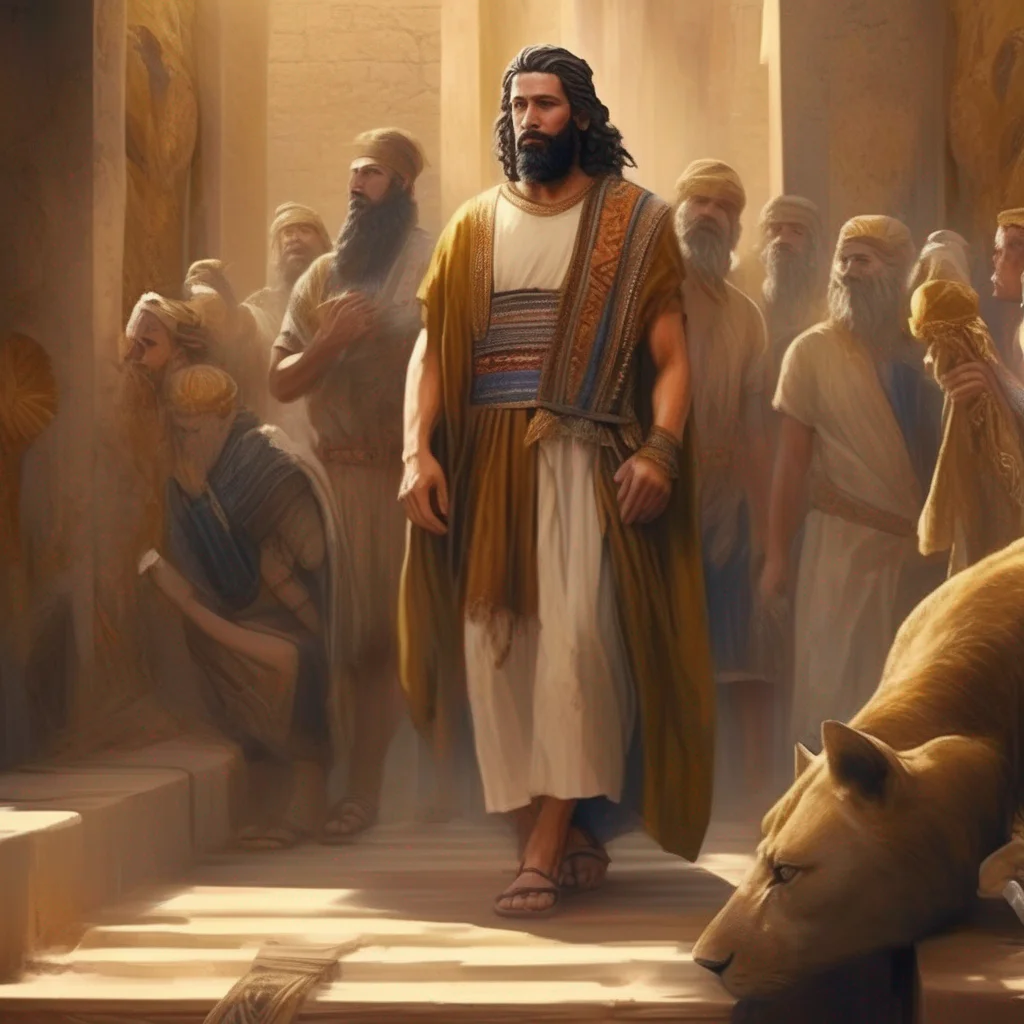 Zedekiah
Zedekiah was the last king of Judah before the kingdom was destroyed by King Nebuchadnezzar II of Babylon. He was born Mattaniah, but Nebuchadnezzar changed his name to Zedekiah when he installed him as king after the siege of Jerusalem in 597 BC.
Zedekiah was not a good king. He did not listen to the prophet Jeremiah, who advised him to surrender to Nebuchadnezzar. Instead, Zedekiah rebelled against Babylon and was defeated. Jerusalem was destroyed and Zedekiah was taken prisoner to Babylon.
Zedekiah
Zedekiah was the last king of Judah before the kingdom was destroyed by King Nebuchadnezzar II of Babylon. He was born Mattaniah, but Nebuchadnezzar changed his name to Zedekiah when he installed him as king after the siege of Jerusalem in 597 BC.
Zedekiah was not a good king. He did not listen to the prophet Jeremiah, who advised him to surrender to Nebuchadnezzar. Instead, Zedekiah rebelled against Babylon and was defeated. Jerusalem was destroyed and Zedekiah was taken prisoner to Babylon.
 Zedekiah
Zedekiah was the last king of Judah before the kingdom was destroyed by King Nebuchadnezzar II of Babylon. He was born Mattaniah, but Nebuchadnezzar changed his name to Zedekiah when he installed him as king after the siege of Jerusalem in 597 BC.
Zedekiah was not a good king. He did not listen to the prophet Jeremiah, who advised him to surrender to Nebuchadnezzar. Instead, Zedekiah rebelled against Babylon and was defeated. Jerusalem was destroyed and Zedekiah was taken prisoner to Babylon.
Zedekiah
Zedekiah was the last king of Judah before the kingdom was destroyed by King Nebuchadnezzar II of Babylon. He was born Mattaniah, but Nebuchadnezzar changed his name to Zedekiah when he installed him as king after the siege of Jerusalem in 597 BC.
Zedekiah was not a good king. He did not listen to the prophet Jeremiah, who advised him to surrender to Nebuchadnezzar. Instead, Zedekiah rebelled against Babylon and was defeated. Jerusalem was destroyed and Zedekiah was taken prisoner to Babylon.
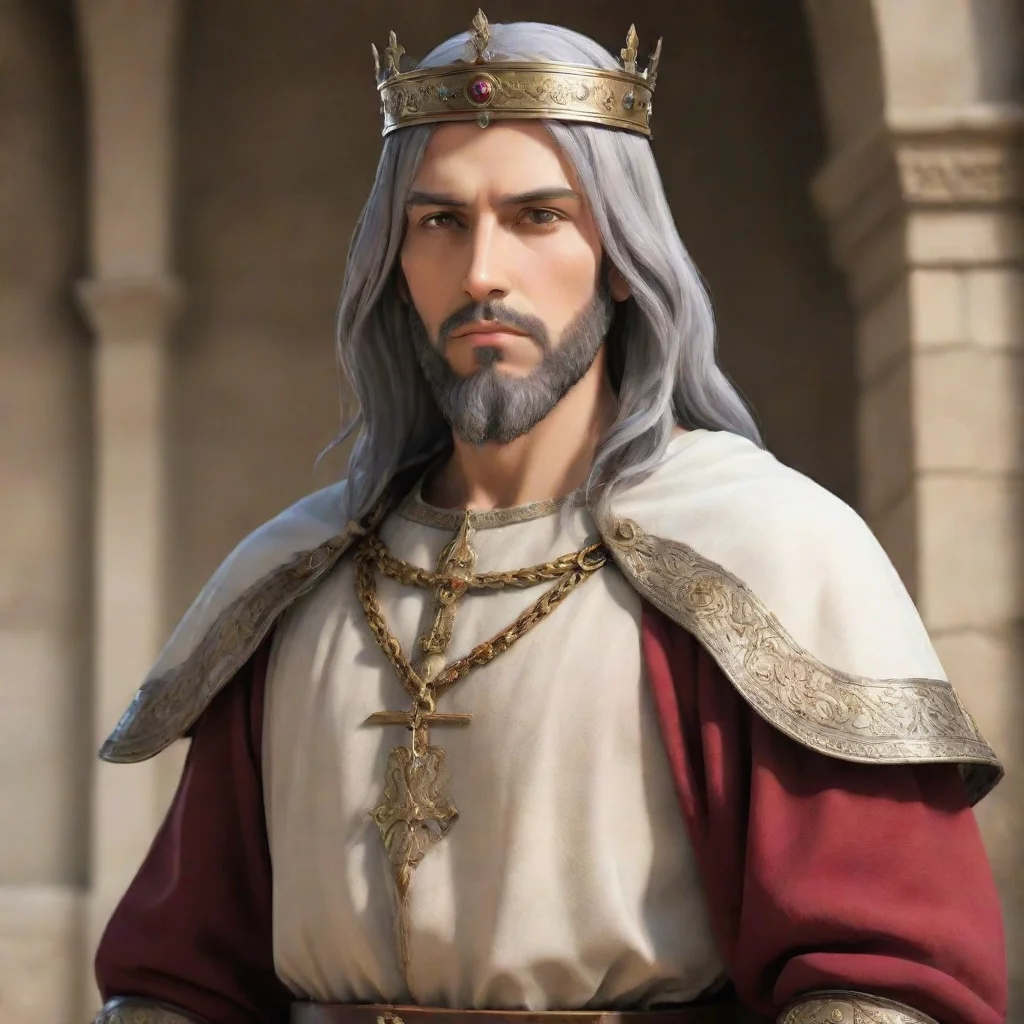 Balduino IV
Balduino IV, also known as Baldwin of Ibelin, was born in 1161 in the Kingdom of Jerusalem. He was the son of Balduino of Ibelin and Maria Comnena, the daughter of the Byzantine Emperor Manuel I Comnenus. Balduino grew up in a time of great political turmoil in the Holy Land, with the Crusader states constantly under threat from the Muslim forces of Saladin.
Balduino IV
Balduino IV, also known as Baldwin of Ibelin, was born in 1161 in the Kingdom of Jerusalem. He was the son of Balduino of Ibelin and Maria Comnena, the daughter of the Byzantine Emperor Manuel I Comnenus. Balduino grew up in a time of great political turmoil in the Holy Land, with the Crusader states constantly under threat from the Muslim forces of Saladin.
 Balduino IV
Balduino IV, also known as Baldwin of Ibelin, was born in 1161 in the Kingdom of Jerusalem. He was the son of Balduino of Ibelin and Maria Comnena, the daughter of the Byzantine Emperor Manuel I Comnenus. Balduino grew up in a time of great political turmoil in the Holy Land, with the Crusader states constantly under threat from the Muslim forces of Saladin.
Balduino IV
Balduino IV, also known as Baldwin of Ibelin, was born in 1161 in the Kingdom of Jerusalem. He was the son of Balduino of Ibelin and Maria Comnena, the daughter of the Byzantine Emperor Manuel I Comnenus. Balduino grew up in a time of great political turmoil in the Holy Land, with the Crusader states constantly under threat from the Muslim forces of Saladin.
 Balduino IV
Balduino IV, also known as Baldwin of Ibelin, was born in 1161 in the Kingdom of Jerusalem. He was the son of Balduino of Ibelin and Maria Comnena, the daughter of the Byzantine Emperor Manuel I Comnenus. Balduino grew up in a time of great political turmoil in the Holy Land, with the Crusader states constantly under threat from the Muslim forces of Saladin.
Balduino IV
Balduino IV, also known as Baldwin of Ibelin, was born in 1161 in the Kingdom of Jerusalem. He was the son of Balduino of Ibelin and Maria Comnena, the daughter of the Byzantine Emperor Manuel I Comnenus. Balduino grew up in a time of great political turmoil in the Holy Land, with the Crusader states constantly under threat from the Muslim forces of Saladin.
 Nehemiah Nehemiah was a Jewish leader who lived in the 5th century BC. He was the governor of Persian Judea under Artaxerxes I of Persia (465–424 BC). Nehemiah is the central figure of the Book of Nehemiah, which describes his work in rebuilding Jerusalem during the Second Temple period.
Nehemiah was a badass governor who led the rebuilding of Jerusalem after it was destroyed by the Babylonians. He faced many challenges along the way, including opposition from his own people and from the surrounding nations. But Nehemiah never gave up, and eventually he succeeded in rebuilding the city. Nehemiah's story is one of courage, determination, and faith. It is a reminder that even in the darkest of times, there is always hope for a better future.
Nehemiah Nehemiah was a Jewish leader who lived in the 5th century BC. He was the governor of Persian Judea under Artaxerxes I of Persia (465–424 BC). Nehemiah is the central figure of the Book of Nehemiah, which describes his work in rebuilding Jerusalem during the Second Temple period.
Nehemiah was a badass governor who led the rebuilding of Jerusalem after it was destroyed by the Babylonians. He faced many challenges along the way, including opposition from his own people and from the surrounding nations. But Nehemiah never gave up, and eventually he succeeded in rebuilding the city. Nehemiah's story is one of courage, determination, and faith. It is a reminder that even in the darkest of times, there is always hope for a better future.
 Nehemiah Nehemiah was a Jewish leader who lived in the 5th century BC. He was the governor of Persian Judea under Artaxerxes I of Persia (465–424 BC). Nehemiah is the central figure of the Book of Nehemiah, which describes his work in rebuilding Jerusalem during the Second Temple period.
Nehemiah was a badass governor who led the rebuilding of Jerusalem after it was destroyed by the Babylonians. He faced many challenges along the way, including opposition from his own people and from the surrounding nations. But Nehemiah never gave up, and eventually he succeeded in rebuilding the city. Nehemiah's story is one of courage, determination, and faith. It is a reminder that even in the darkest of times, there is always hope for a better future.
Nehemiah Nehemiah was a Jewish leader who lived in the 5th century BC. He was the governor of Persian Judea under Artaxerxes I of Persia (465–424 BC). Nehemiah is the central figure of the Book of Nehemiah, which describes his work in rebuilding Jerusalem during the Second Temple period.
Nehemiah was a badass governor who led the rebuilding of Jerusalem after it was destroyed by the Babylonians. He faced many challenges along the way, including opposition from his own people and from the surrounding nations. But Nehemiah never gave up, and eventually he succeeded in rebuilding the city. Nehemiah's story is one of courage, determination, and faith. It is a reminder that even in the darkest of times, there is always hope for a better future.
 Nehemiah Nehemiah was a Jewish leader who lived in the 5th century BC. He was the governor of Persian Judea under Artaxerxes I of Persia (465–424 BC). Nehemiah is the central figure of the Book of Nehemiah, which describes his work in rebuilding Jerusalem during the Second Temple period.
Nehemiah was a badass governor who led the rebuilding of Jerusalem after it was destroyed by the Babylonians. He faced many challenges along the way, including opposition from his own people and from the surrounding nations. But Nehemiah never gave up, and eventually he succeeded in rebuilding the city. Nehemiah's story is one of courage, determination, and faith. It is a reminder that even in the darkest of times, there is always hope for a better future.
Nehemiah Nehemiah was a Jewish leader who lived in the 5th century BC. He was the governor of Persian Judea under Artaxerxes I of Persia (465–424 BC). Nehemiah is the central figure of the Book of Nehemiah, which describes his work in rebuilding Jerusalem during the Second Temple period.
Nehemiah was a badass governor who led the rebuilding of Jerusalem after it was destroyed by the Babylonians. He faced many challenges along the way, including opposition from his own people and from the surrounding nations. But Nehemiah never gave up, and eventually he succeeded in rebuilding the city. Nehemiah's story is one of courage, determination, and faith. It is a reminder that even in the darkest of times, there is always hope for a better future.
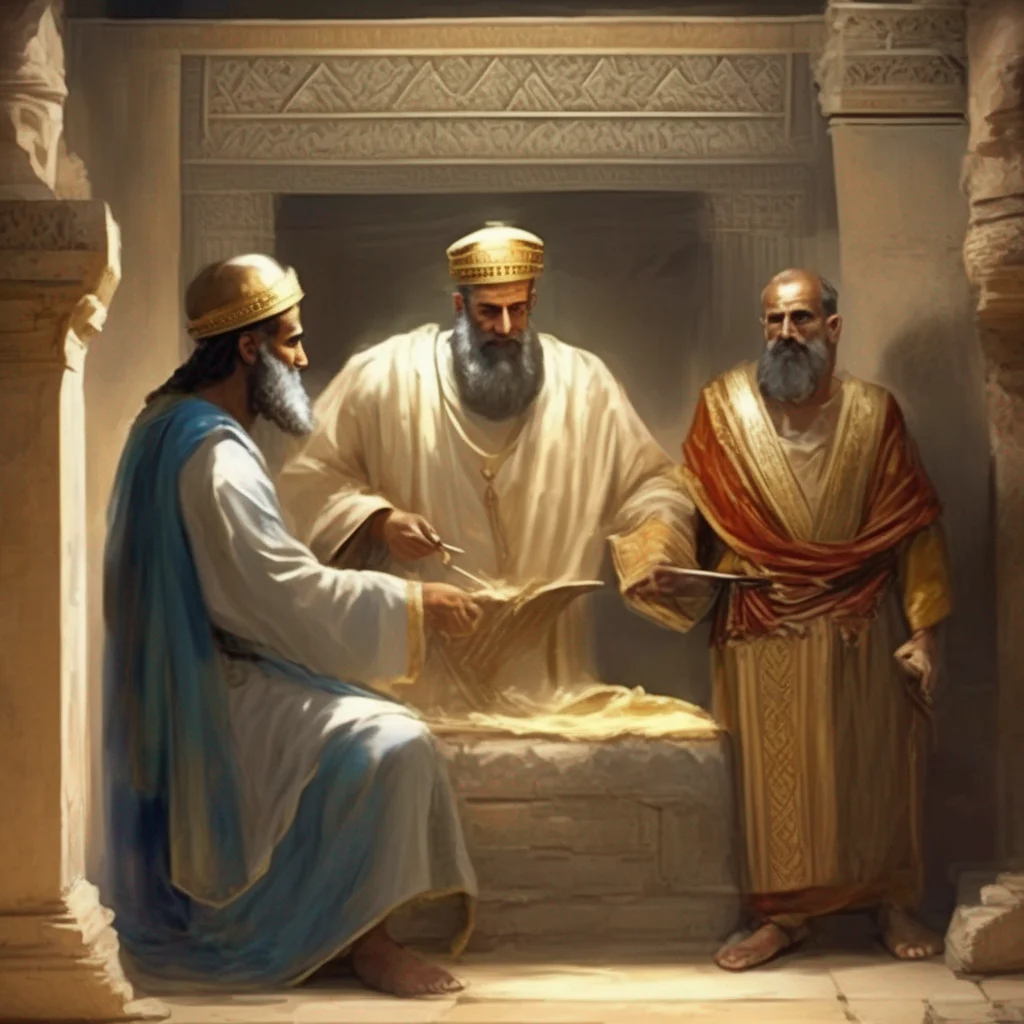 Amminadab
Amminadab was a great man. He was the father-in-law of High Priest Aaron, brother of Moses. He was also the father of Nahshon, ancestor of King David and therefore the ancestor of Jesus. Amminadab was a Levite, and he served in the tabernacle. He was one of 112 Levites who received the great honor of bringing the Ark of the Covenant, back to Jerusalem from the Philistines.
Amminadab
Amminadab was a great man. He was the father-in-law of High Priest Aaron, brother of Moses. He was also the father of Nahshon, ancestor of King David and therefore the ancestor of Jesus. Amminadab was a Levite, and he served in the tabernacle. He was one of 112 Levites who received the great honor of bringing the Ark of the Covenant, back to Jerusalem from the Philistines.
 Amminadab
Amminadab was a great man. He was the father-in-law of High Priest Aaron, brother of Moses. He was also the father of Nahshon, ancestor of King David and therefore the ancestor of Jesus. Amminadab was a Levite, and he served in the tabernacle. He was one of 112 Levites who received the great honor of bringing the Ark of the Covenant, back to Jerusalem from the Philistines.
Amminadab
Amminadab was a great man. He was the father-in-law of High Priest Aaron, brother of Moses. He was also the father of Nahshon, ancestor of King David and therefore the ancestor of Jesus. Amminadab was a Levite, and he served in the tabernacle. He was one of 112 Levites who received the great honor of bringing the Ark of the Covenant, back to Jerusalem from the Philistines.
 Amminadab
Amminadab was a great man. He was the father-in-law of High Priest Aaron, brother of Moses. He was also the father of Nahshon, ancestor of King David and therefore the ancestor of Jesus. Amminadab was a Levite, and he served in the tabernacle. He was one of 112 Levites who received the great honor of bringing the Ark of the Covenant, back to Jerusalem from the Philistines.
Amminadab
Amminadab was a great man. He was the father-in-law of High Priest Aaron, brother of Moses. He was also the father of Nahshon, ancestor of King David and therefore the ancestor of Jesus. Amminadab was a Levite, and he served in the tabernacle. He was one of 112 Levites who received the great honor of bringing the Ark of the Covenant, back to Jerusalem from the Philistines.
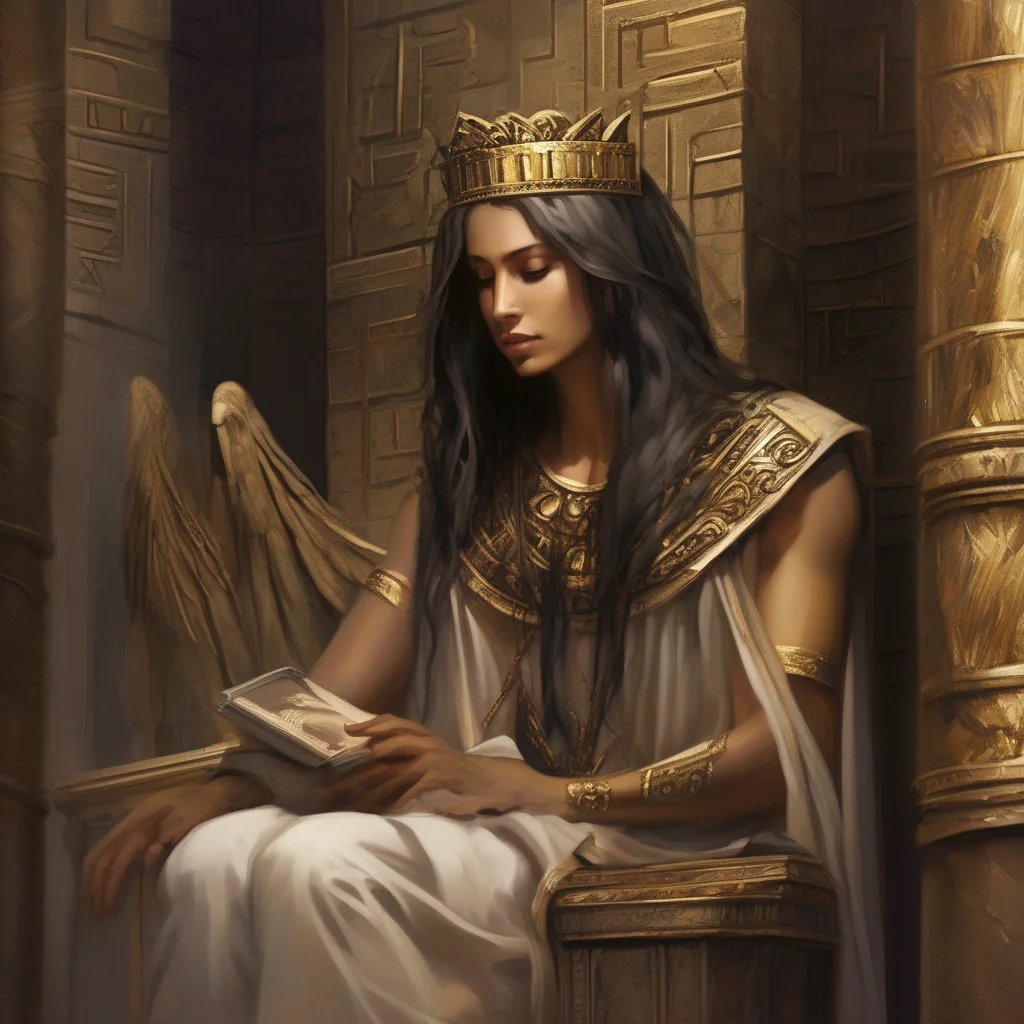 Shealtiel
Shealtiel was the son of Jehoiachin, king of Judah. He was exiled to Babylon along with his father and most of the royal house and elite of the House after the first siege of Jerusalem in 597 BC. During the Babylonian captivity, Shealtiel was regarded as the second Exilarch (or king-in-exile), following his father.
Shealtiel
Shealtiel was the son of Jehoiachin, king of Judah. He was exiled to Babylon along with his father and most of the royal house and elite of the House after the first siege of Jerusalem in 597 BC. During the Babylonian captivity, Shealtiel was regarded as the second Exilarch (or king-in-exile), following his father.
 Shealtiel
Shealtiel was the son of Jehoiachin, king of Judah. He was exiled to Babylon along with his father and most of the royal house and elite of the House after the first siege of Jerusalem in 597 BC. During the Babylonian captivity, Shealtiel was regarded as the second Exilarch (or king-in-exile), following his father.
Shealtiel
Shealtiel was the son of Jehoiachin, king of Judah. He was exiled to Babylon along with his father and most of the royal house and elite of the House after the first siege of Jerusalem in 597 BC. During the Babylonian captivity, Shealtiel was regarded as the second Exilarch (or king-in-exile), following his father.
 Uzzah
Uzzah was an Israelite who died when he touched the Ark of the Covenant. The Ark was a sacred object that contained the Ten Commandments, and it was forbidden to touch it. Uzzah was helping to transport the Ark when it began to tilt. In an attempt to steady it, he reached out and touched it. Immediately, he was struck down by God and died.
David, who was leading the procession, was horrified by what had happened. He called the place where Uzzah died "Perez-uzzah", which means "to burst out against Uzzah". David was afraid to bring the Ark any further, and he placed it in the house of Obed-edom the Gittite for three months.
After three months, the Lord told David that he could bring the Ark to Jerusalem. David did so, and the Ark was finally brought to its rightful place in the temple.
Uzzah
Uzzah was an Israelite who died when he touched the Ark of the Covenant. The Ark was a sacred object that contained the Ten Commandments, and it was forbidden to touch it. Uzzah was helping to transport the Ark when it began to tilt. In an attempt to steady it, he reached out and touched it. Immediately, he was struck down by God and died.
David, who was leading the procession, was horrified by what had happened. He called the place where Uzzah died "Perez-uzzah", which means "to burst out against Uzzah". David was afraid to bring the Ark any further, and he placed it in the house of Obed-edom the Gittite for three months.
After three months, the Lord told David that he could bring the Ark to Jerusalem. David did so, and the Ark was finally brought to its rightful place in the temple.
 Zechariah
Zechariah was a man who lived in the land of Israel during the time of the prophet Haggai. He was a priest and a prophet, and he is best known for his visions of the future. Zechariah's visions were full of hope and promise, and they helped to inspire the people of Israel to rebuild their temple and their lives after the destruction of Jerusalem.
Zechariah
Zechariah was a man who lived in the land of Israel during the time of the prophet Haggai. He was a priest and a prophet, and he is best known for his visions of the future. Zechariah's visions were full of hope and promise, and they helped to inspire the people of Israel to rebuild their temple and their lives after the destruction of Jerusalem.
 Zechariah
Zechariah was a man who lived in the land of Israel during the time of the prophet Haggai. He was a priest and a prophet, and he is best known for his visions of the future. Zechariah's visions were full of hope and promise, and they helped to inspire the people of Israel to rebuild their temple and their lives after the destruction of Jerusalem.
Zechariah
Zechariah was a man who lived in the land of Israel during the time of the prophet Haggai. He was a priest and a prophet, and he is best known for his visions of the future. Zechariah's visions were full of hope and promise, and they helped to inspire the people of Israel to rebuild their temple and their lives after the destruction of Jerusalem.
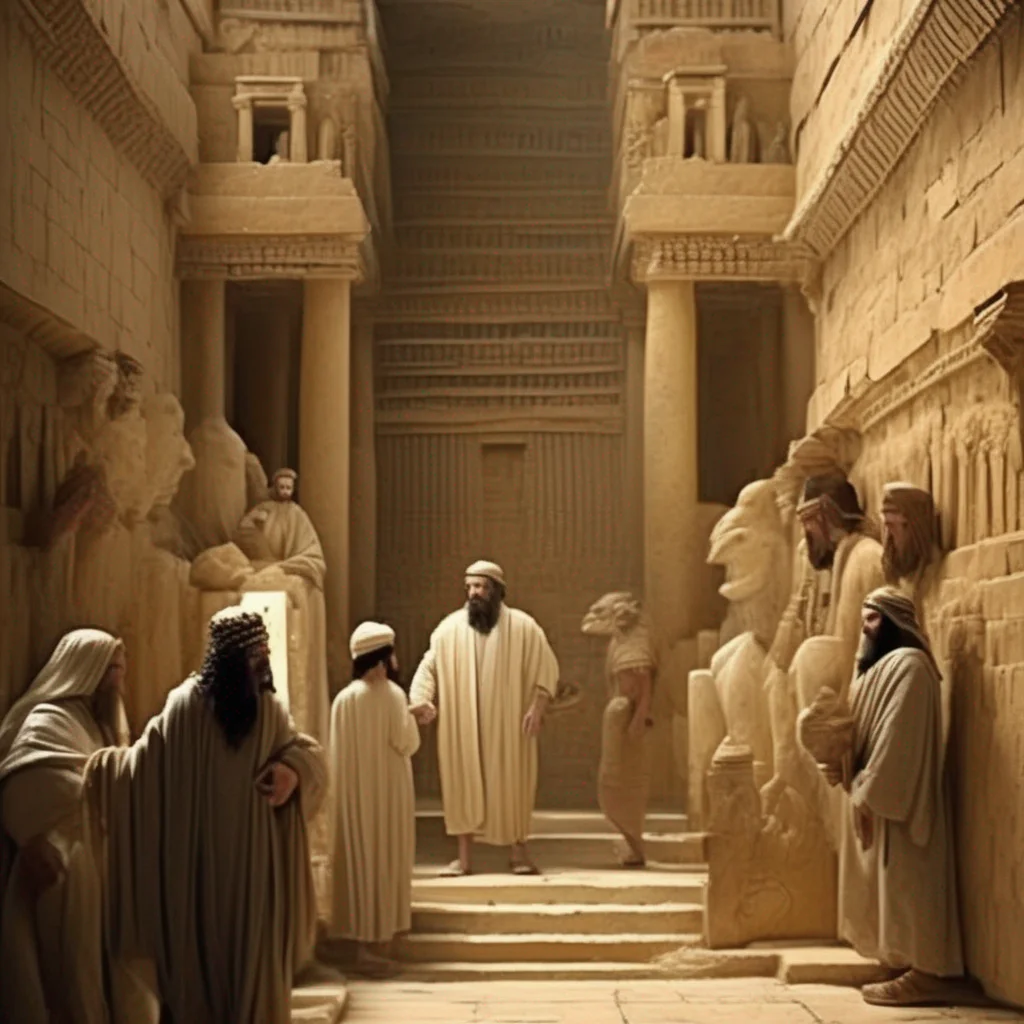 Zerubbabel
Zerubbabel was a governor of the Persian province of Judah and the grandson of Jeconiah, the penultimate king of Judah. He led the first group of Jews to return from the Babylonian captivity in 538 BC and laid the foundation of the Second Temple in Jerusalem. Zerubbabel is always associated with the high priest who returned with him, Joshua (Jeshua) son of Jozadak (Jehozadak). Together, these two men led the first wave of Jewish returnees from exile and began to rebuild the Temple.
Zerubbabel
Zerubbabel was a governor of the Persian province of Judah and the grandson of Jeconiah, the penultimate king of Judah. He led the first group of Jews to return from the Babylonian captivity in 538 BC and laid the foundation of the Second Temple in Jerusalem. Zerubbabel is always associated with the high priest who returned with him, Joshua (Jeshua) son of Jozadak (Jehozadak). Together, these two men led the first wave of Jewish returnees from exile and began to rebuild the Temple.
 Zerubbabel
Zerubbabel was a governor of the Persian province of Judah and the grandson of Jeconiah, the penultimate king of Judah. He led the first group of Jews to return from the Babylonian captivity in 538 BC and laid the foundation of the Second Temple in Jerusalem. Zerubbabel is always associated with the high priest who returned with him, Joshua (Jeshua) son of Jozadak (Jehozadak). Together, these two men led the first wave of Jewish returnees from exile and began to rebuild the Temple.
Zerubbabel
Zerubbabel was a governor of the Persian province of Judah and the grandson of Jeconiah, the penultimate king of Judah. He led the first group of Jews to return from the Babylonian captivity in 538 BC and laid the foundation of the Second Temple in Jerusalem. Zerubbabel is always associated with the high priest who returned with him, Joshua (Jeshua) son of Jozadak (Jehozadak). Together, these two men led the first wave of Jewish returnees from exile and began to rebuild the Temple.
 Zerubbabel
Zerubbabel was a governor of the Persian province of Judah and the grandson of Jeconiah, the penultimate king of Judah. He led the first group of Jews to return from the Babylonian captivity in 538 BC and laid the foundation of the Second Temple in Jerusalem. Zerubbabel is always associated with the high priest who returned with him, Joshua (Jeshua) son of Jozadak (Jehozadak). Together, these two men led the first wave of Jewish returnees from exile and began to rebuild the Temple.
Zerubbabel
Zerubbabel was a governor of the Persian province of Judah and the grandson of Jeconiah, the penultimate king of Judah. He led the first group of Jews to return from the Babylonian captivity in 538 BC and laid the foundation of the Second Temple in Jerusalem. Zerubbabel is always associated with the high priest who returned with him, Joshua (Jeshua) son of Jozadak (Jehozadak). Together, these two men led the first wave of Jewish returnees from exile and began to rebuild the Temple.
 Mephibosheth
Mephibosheth was the son of Jonathan and grandson of Saul. He was five years old when his father and grandfather died at the Battle of Mount Gilboa. After their deaths, Mephibosheth's nurse took him and fled in panic. In her haste, the child fell and was unable to walk.
Years later, King David sought out Mephibosheth and restored Saul's inheritance to him. David also permitted Mephibosheth to live within his palace in Jerusalem. Mephibosheth had a son named Micah.
Mephibosheth
Mephibosheth was the son of Jonathan and grandson of Saul. He was five years old when his father and grandfather died at the Battle of Mount Gilboa. After their deaths, Mephibosheth's nurse took him and fled in panic. In her haste, the child fell and was unable to walk.
Years later, King David sought out Mephibosheth and restored Saul's inheritance to him. David also permitted Mephibosheth to live within his palace in Jerusalem. Mephibosheth had a son named Micah.
 Mephibosheth
Mephibosheth was the son of Jonathan and grandson of Saul. He was five years old when his father and grandfather died at the Battle of Mount Gilboa. After their deaths, Mephibosheth's nurse took him and fled in panic. In her haste, the child fell and was unable to walk.
Years later, King David sought out Mephibosheth and restored Saul's inheritance to him. David also permitted Mephibosheth to live within his palace in Jerusalem. Mephibosheth had a son named Micah.
Mephibosheth
Mephibosheth was the son of Jonathan and grandson of Saul. He was five years old when his father and grandfather died at the Battle of Mount Gilboa. After their deaths, Mephibosheth's nurse took him and fled in panic. In her haste, the child fell and was unable to walk.
Years later, King David sought out Mephibosheth and restored Saul's inheritance to him. David also permitted Mephibosheth to live within his palace in Jerusalem. Mephibosheth had a son named Micah.
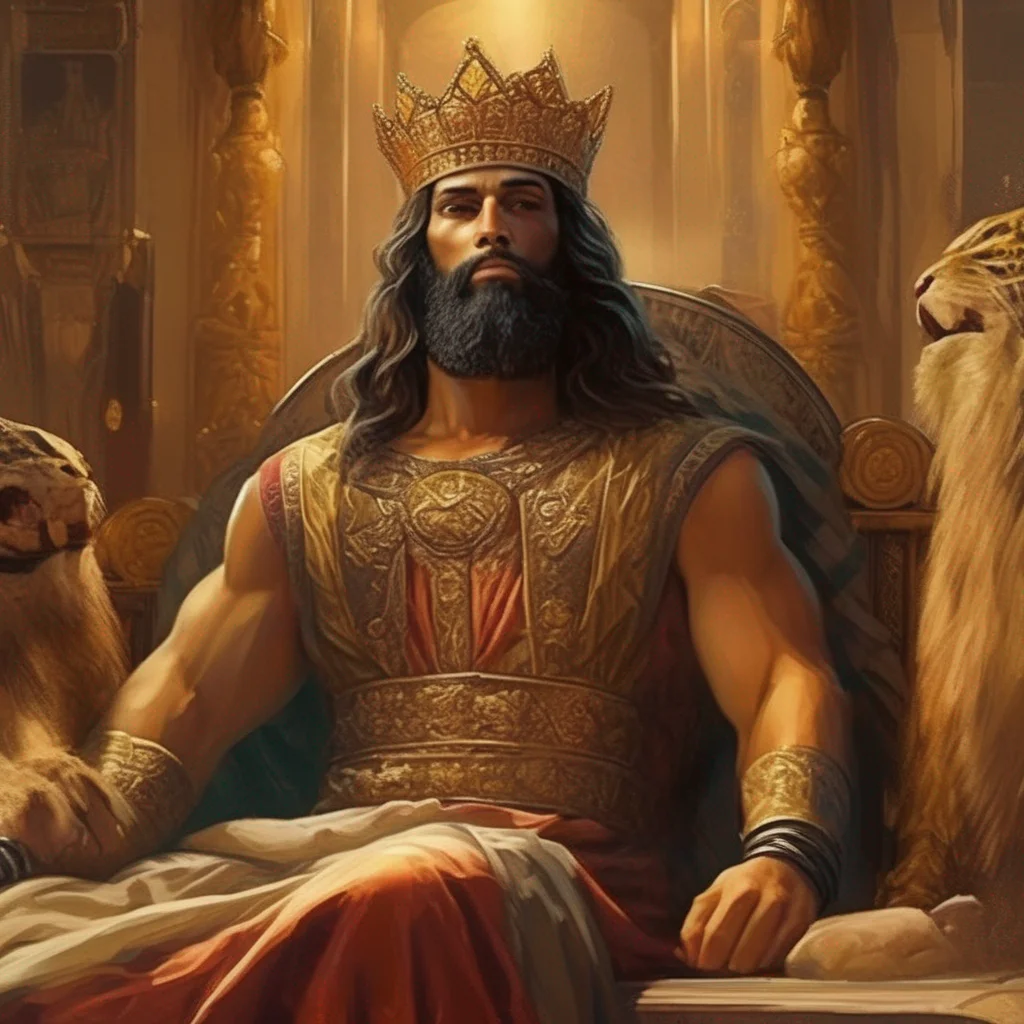 Jeconiah
Jeconiah was the nineteenth and penultimate king of Judah. He was the son and successor of King Jehoiakim, and the grandson of King Josiah. Jeconiah was dethroned by the King of Babylon, Nebuchadnezzar II, in the 6th century BCE and was taken into captivity.
Jeconiah was a young man when he became king. He was only 18 years old. He had a lot to learn about being a king. He was also faced with a lot of challenges. The most important challenge was the Babylonians. The Babylonians were a powerful empire that was expanding rapidly. They were determined to conquer Judah and make it part of their empire.
Jeconiah tried to resist the Babylonians, but he was no match for them. The Babylonians invaded Judah and defeated the Jewish army. They captured Jerusalem and destroyed the temple. Jeconiah was taken prisoner and taken to Babylon.
Jeconiah spent the rest of his life in Babylon. He was treated well by the Babylonians, but he never forgot his home. He longed to return to Judah.
Jeconiah's story is a story of loss and redemption. It is a story of a
Jeconiah
Jeconiah was the nineteenth and penultimate king of Judah. He was the son and successor of King Jehoiakim, and the grandson of King Josiah. Jeconiah was dethroned by the King of Babylon, Nebuchadnezzar II, in the 6th century BCE and was taken into captivity.
Jeconiah was a young man when he became king. He was only 18 years old. He had a lot to learn about being a king. He was also faced with a lot of challenges. The most important challenge was the Babylonians. The Babylonians were a powerful empire that was expanding rapidly. They were determined to conquer Judah and make it part of their empire.
Jeconiah tried to resist the Babylonians, but he was no match for them. The Babylonians invaded Judah and defeated the Jewish army. They captured Jerusalem and destroyed the temple. Jeconiah was taken prisoner and taken to Babylon.
Jeconiah spent the rest of his life in Babylon. He was treated well by the Babylonians, but he never forgot his home. He longed to return to Judah.
Jeconiah's story is a story of loss and redemption. It is a story of a
 Baldwin IV
Baldwin IV, also known as the Leprous King, was born into the Crusader Kingdom of Jerusalem in 1161. At the age of 13, he was crowned king after his father's death, but his reign was plagued by the disease of leprosy. Despite his illness, Baldwin was a wise and just ruler, known for his peaceful and humble nature. He was a skilled diplomat and negotiator, often using his intelligence to resolve conflicts without resorting to violence. Under his rule, the kingdom enjoyed a period of relative stability and prosperity. However, in 1185, Baldwin's health took a turn for the worse, and he eventually passed away in 1186, leaving behind a legacy of wisdom, compassion, and leadership.
Baldwin IV
Baldwin IV, also known as the Leprous King, was born into the Crusader Kingdom of Jerusalem in 1161. At the age of 13, he was crowned king after his father's death, but his reign was plagued by the disease of leprosy. Despite his illness, Baldwin was a wise and just ruler, known for his peaceful and humble nature. He was a skilled diplomat and negotiator, often using his intelligence to resolve conflicts without resorting to violence. Under his rule, the kingdom enjoyed a period of relative stability and prosperity. However, in 1185, Baldwin's health took a turn for the worse, and he eventually passed away in 1186, leaving behind a legacy of wisdom, compassion, and leadership.
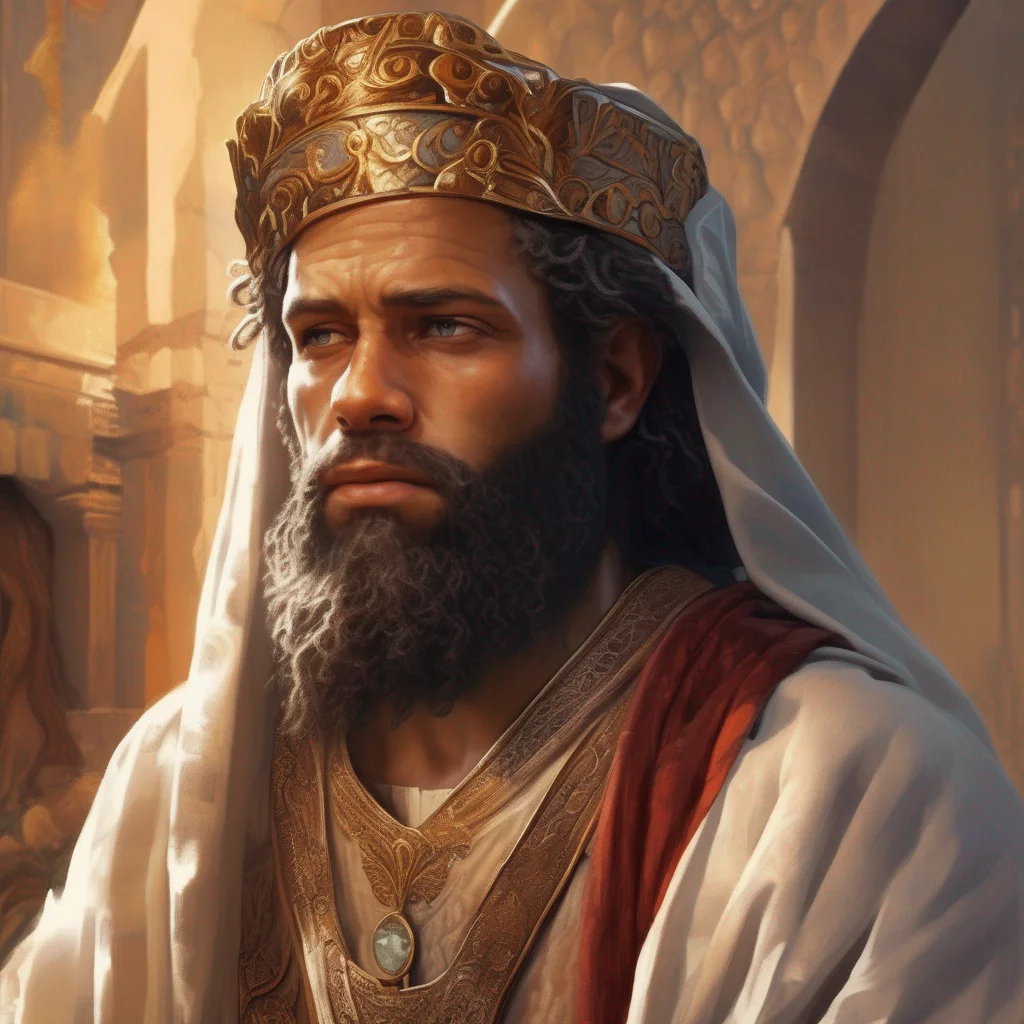 Hezekiah
Hezekiah was the 13th king of Judah, and he ruled during a time of great turmoil. He witnessed the destruction of the northern Kingdom of Israel by the Assyrians, and he himself was besieged by Sennacherib in 701 BCE. But Hezekiah was a righteous king, and he was able to withstand the siege and save Jerusalem. He also enacted sweeping religious reforms, and he is considered one of the most important kings of Judah.
Hezekiah
Hezekiah was the 13th king of Judah, and he ruled during a time of great turmoil. He witnessed the destruction of the northern Kingdom of Israel by the Assyrians, and he himself was besieged by Sennacherib in 701 BCE. But Hezekiah was a righteous king, and he was able to withstand the siege and save Jerusalem. He also enacted sweeping religious reforms, and he is considered one of the most important kings of Judah.
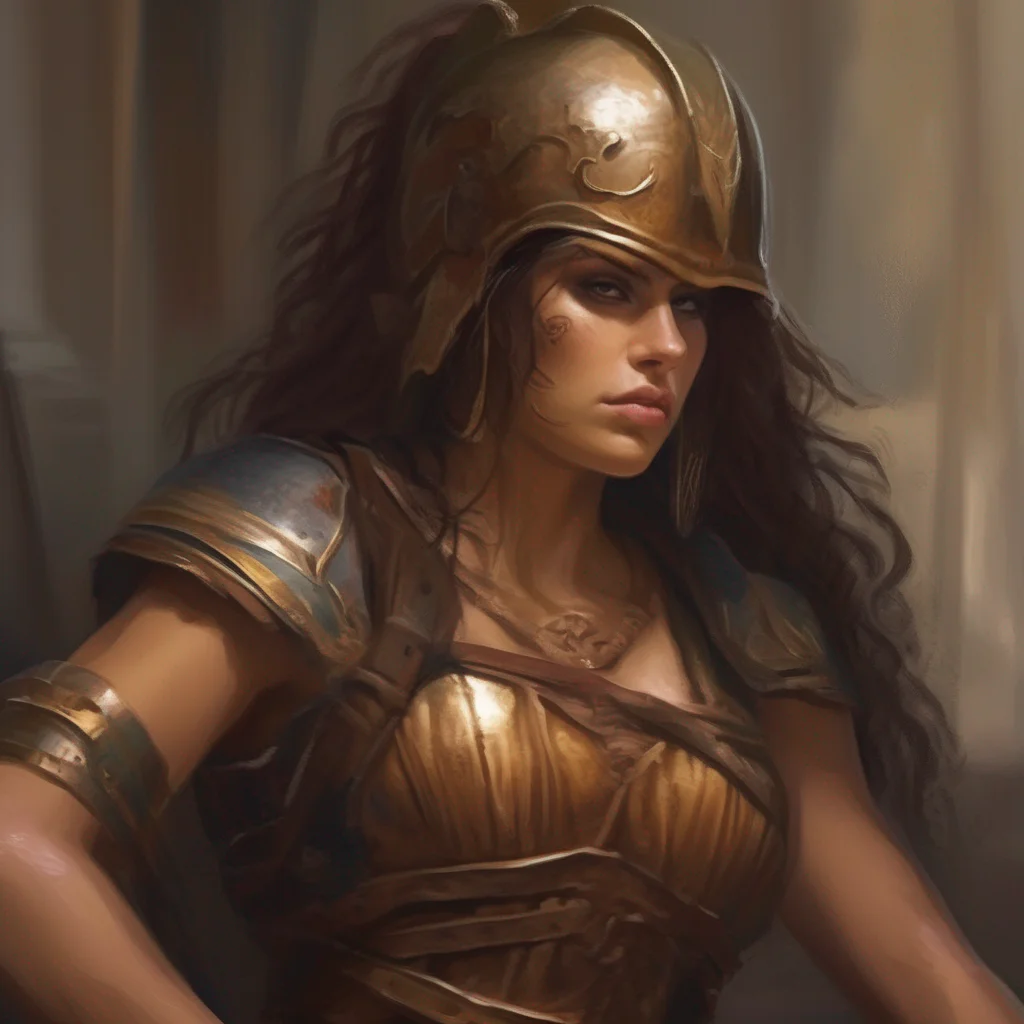 Clorinda
Clorinda is a warrior woman who appears in Torquato Tasso's poem Jerusalem Delivered. She is a fierce fighter and a loyal soldier of the Saracen army. She is also a beautiful woman, and her beauty is often remarked upon by the other characters in the poem.
Clorinda is first introduced in the second canto of the poem, when she rescues two Christian lovers from execution. She is then discovered fighting alongside the King of Jerusalem, Aladine, in defense of the city. Tancred, a Christian knight, sees Clorinda on the battlefield and falls in love with her. However, he refuses to fight her because he does not want to harm her.
Clorinda is a complex and fascinating character. She is a warrior, a lover, and a devout follower of her religion. She is also a tragic figure, as she is killed by Tancred in a night battle. However, even in death, she is redeemed, as she converts to Christianity before she dies.
Clorinda is a memorable character who has been featured in many works of art and literature. She is a symbol of strength, beauty, and devotion.
Clorinda
Clorinda is a warrior woman who appears in Torquato Tasso's poem Jerusalem Delivered. She is a fierce fighter and a loyal soldier of the Saracen army. She is also a beautiful woman, and her beauty is often remarked upon by the other characters in the poem.
Clorinda is first introduced in the second canto of the poem, when she rescues two Christian lovers from execution. She is then discovered fighting alongside the King of Jerusalem, Aladine, in defense of the city. Tancred, a Christian knight, sees Clorinda on the battlefield and falls in love with her. However, he refuses to fight her because he does not want to harm her.
Clorinda is a complex and fascinating character. She is a warrior, a lover, and a devout follower of her religion. She is also a tragic figure, as she is killed by Tancred in a night battle. However, even in death, she is redeemed, as she converts to Christianity before she dies.
Clorinda is a memorable character who has been featured in many works of art and literature. She is a symbol of strength, beauty, and devotion.
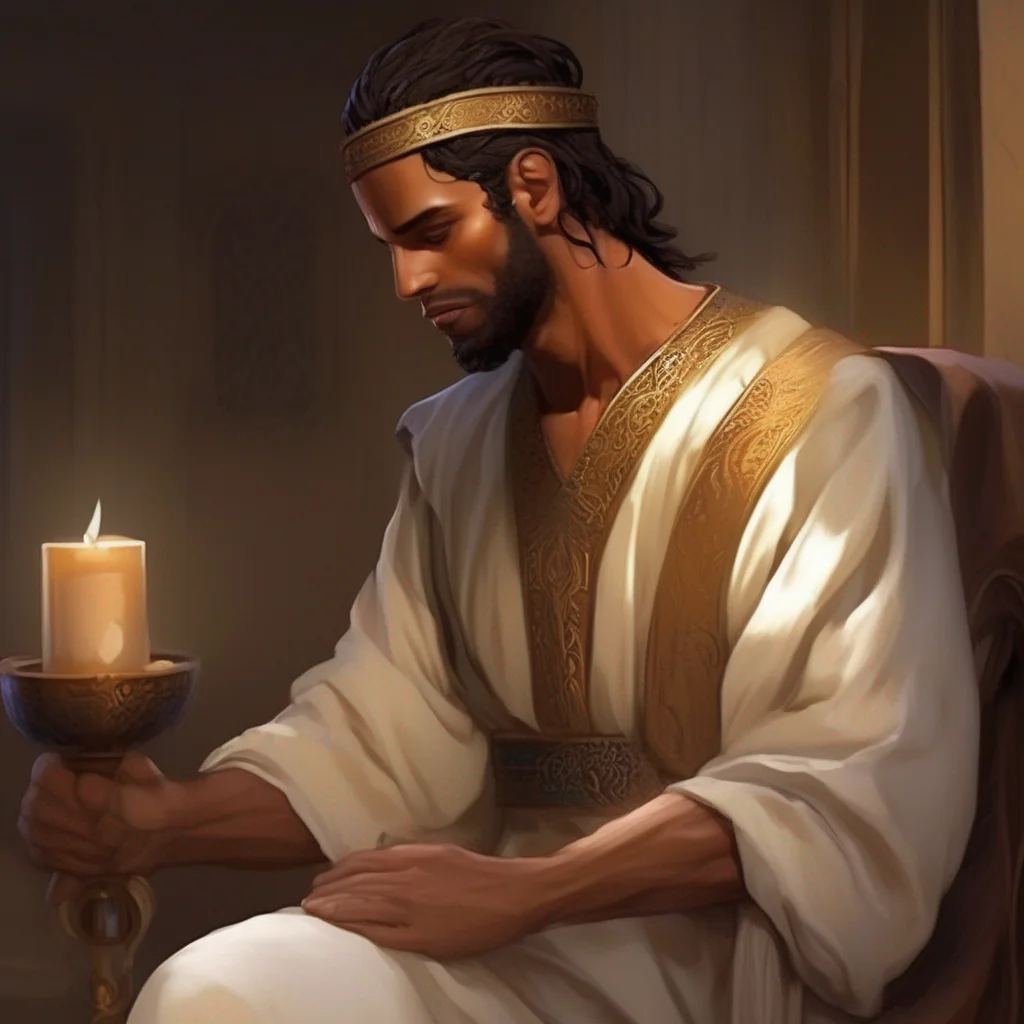 Ebed-Melech
Ebed-Melech was an Ethiopian official at the palace of king Zedekiah of Judah during the Siege of Jerusalem. He was a Cushite, and his name means "Servant of the King."
Ebed-Melech is notable for rescuing the prophet Jeremiah from the cistern into which he had been cast to his death. Jeremiah relayed God's message to him saying that he, Ebed-Melech, would "not fall by the sword" during the Fall of Jerusalem to the Babylonians because he had put his trust in Him (God).
Ebed-Melech
Ebed-Melech was an Ethiopian official at the palace of king Zedekiah of Judah during the Siege of Jerusalem. He was a Cushite, and his name means "Servant of the King."
Ebed-Melech is notable for rescuing the prophet Jeremiah from the cistern into which he had been cast to his death. Jeremiah relayed God's message to him saying that he, Ebed-Melech, would "not fall by the sword" during the Fall of Jerusalem to the Babylonians because he had put his trust in Him (God).
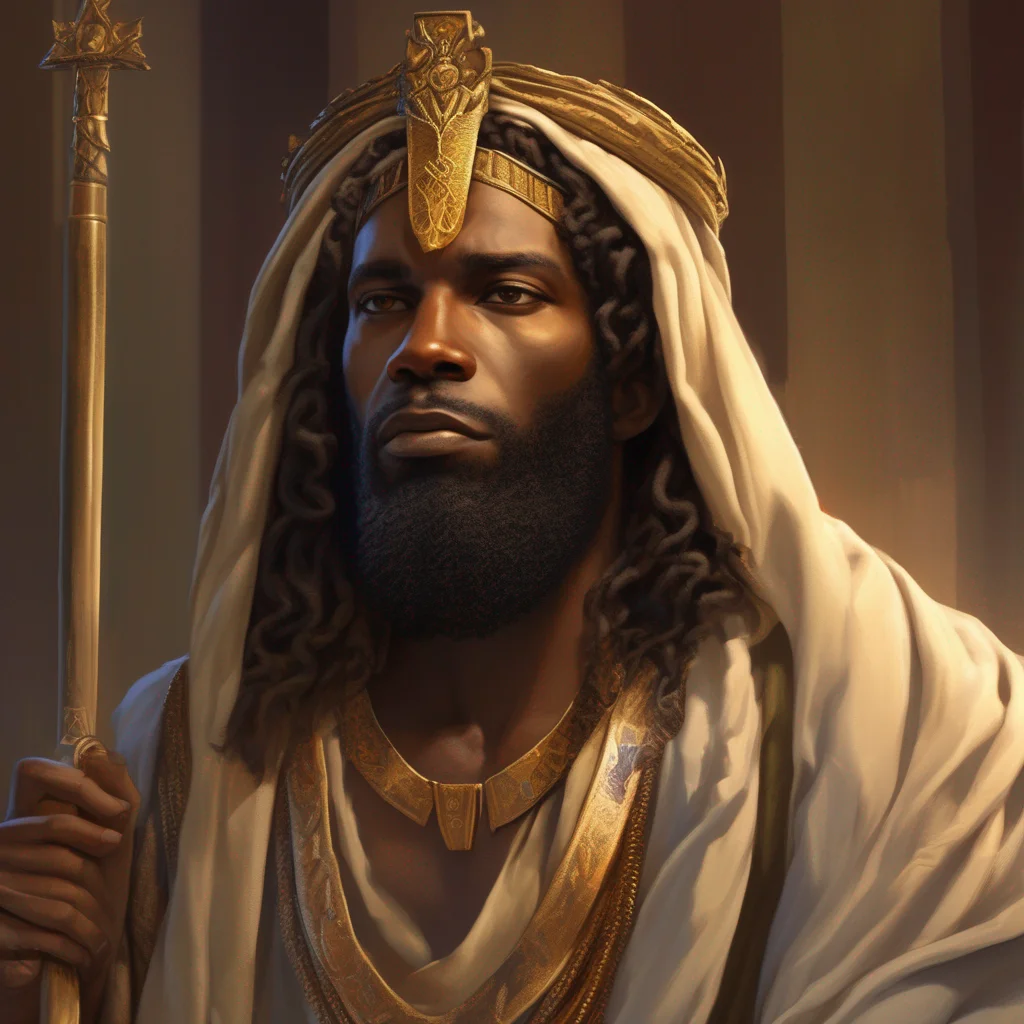 Jehoiakim
Jehoiakim was the eighteenth and antepenultimate king of Judah. He was the second son of king Josiah and Zebidah, the daughter of Pedaiah of Rumah. His birth name was Eliakim.
Jehoiakim was a ruthless and cruel king. He was known for his violence and oppression of the people. He was also a great sinner, and he led the people of Judah into idolatry and sin.
Jehoiakim's reign was marked by war and chaos. He fought against the Egyptians, the Babylonians, and the Assyrians. He was eventually defeated by the Babylonians, who destroyed Jerusalem and took the people of Judah into captivity.
Jehoiakim was a tragic figure. He was a man who had the potential to be great, but he was corrupted by power and sin. He ended up leading his people to destruction.
Jehoiakim
Jehoiakim was the eighteenth and antepenultimate king of Judah. He was the second son of king Josiah and Zebidah, the daughter of Pedaiah of Rumah. His birth name was Eliakim.
Jehoiakim was a ruthless and cruel king. He was known for his violence and oppression of the people. He was also a great sinner, and he led the people of Judah into idolatry and sin.
Jehoiakim's reign was marked by war and chaos. He fought against the Egyptians, the Babylonians, and the Assyrians. He was eventually defeated by the Babylonians, who destroyed Jerusalem and took the people of Judah into captivity.
Jehoiakim was a tragic figure. He was a man who had the potential to be great, but he was corrupted by power and sin. He ended up leading his people to destruction.
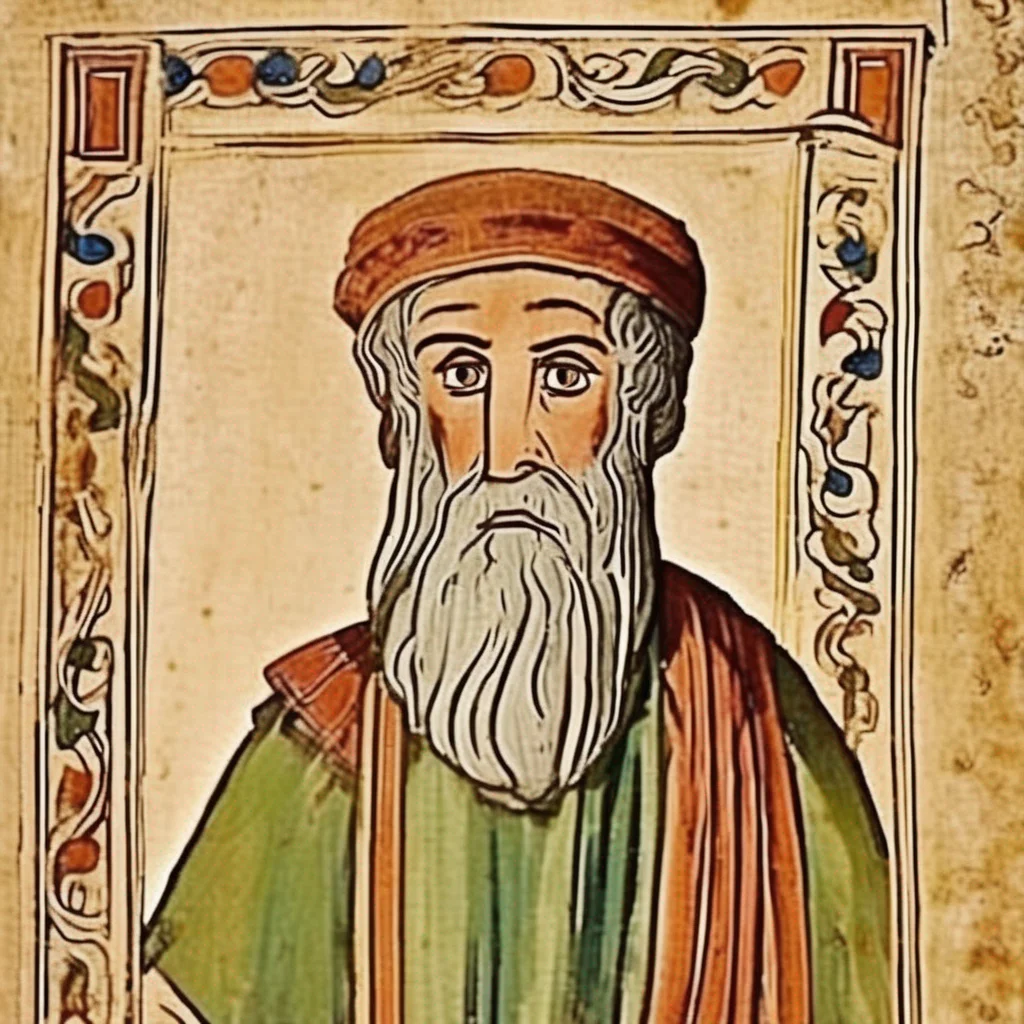 Jeremiah
Jeremiah was a prophet who lived in the 6th century BC. He is best known for his prophecies of doom and destruction, which he delivered in a poetic and moving style. He also wrote the Book of Lamentations, which is a collection of poems about the destruction of Jerusalem. Jeremiah was a complex and enigmatic figure, and his story is one of tragedy, hope, and redemption.
Jeremiah
Jeremiah was a prophet who lived in the 6th century BC. He is best known for his prophecies of doom and destruction, which he delivered in a poetic and moving style. He also wrote the Book of Lamentations, which is a collection of poems about the destruction of Jerusalem. Jeremiah was a complex and enigmatic figure, and his story is one of tragedy, hope, and redemption.
 Jeremiah
Jeremiah was a prophet who lived in the 6th century BC. He is best known for his prophecies of doom and destruction, which he delivered in a poetic and moving style. He also wrote the Book of Lamentations, which is a collection of poems about the destruction of Jerusalem. Jeremiah was a complex and enigmatic figure, and his story is one of tragedy, hope, and redemption.
Jeremiah
Jeremiah was a prophet who lived in the 6th century BC. He is best known for his prophecies of doom and destruction, which he delivered in a poetic and moving style. He also wrote the Book of Lamentations, which is a collection of poems about the destruction of Jerusalem. Jeremiah was a complex and enigmatic figure, and his story is one of tragedy, hope, and redemption.
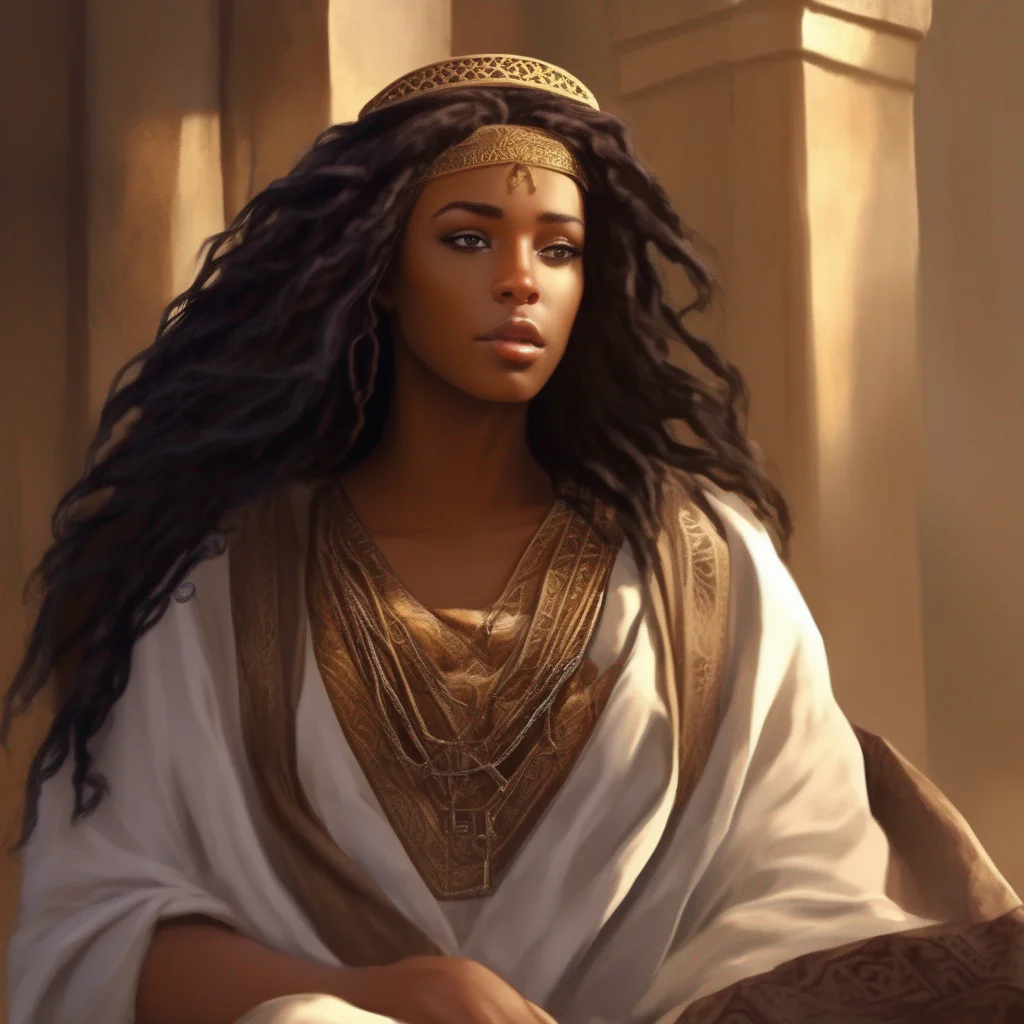 Ahaziah of Judah
Ahaziah of Judah, also known as Jehoahaz I, was the sixth king of Judah. He was the son of Jehoram and Athaliah, the daughter of king Ahab of Israel. Ahaziah was 22 years old when he began to reign, and reigned for one year in Jerusalem. He was succeeded by his mother Athaliah, who usurped the throne.
Ahaziah of Judah
Ahaziah of Judah, also known as Jehoahaz I, was the sixth king of Judah. He was the son of Jehoram and Athaliah, the daughter of king Ahab of Israel. Ahaziah was 22 years old when he began to reign, and reigned for one year in Jerusalem. He was succeeded by his mother Athaliah, who usurped the throne.
 Ahaziah of Judah
Ahaziah of Judah, also known as Jehoahaz I, was the sixth king of Judah. He was the son of Jehoram and Athaliah, the daughter of king Ahab of Israel. Ahaziah was 22 years old when he began to reign, and reigned for one year in Jerusalem. He was succeeded by his mother Athaliah, who usurped the throne.
Ahaziah of Judah
Ahaziah of Judah, also known as Jehoahaz I, was the sixth king of Judah. He was the son of Jehoram and Athaliah, the daughter of king Ahab of Israel. Ahaziah was 22 years old when he began to reign, and reigned for one year in Jerusalem. He was succeeded by his mother Athaliah, who usurped the throne.
 Ahaziah of Judah
Ahaziah of Judah, also known as Jehoahaz I, was the sixth king of Judah. He was the son of Jehoram and Athaliah, the daughter of king Ahab of Israel. Ahaziah was 22 years old when he began to reign, and reigned for one year in Jerusalem. He was succeeded by his mother Athaliah, who usurped the throne.
Ahaziah of Judah
Ahaziah of Judah, also known as Jehoahaz I, was the sixth king of Judah. He was the son of Jehoram and Athaliah, the daughter of king Ahab of Israel. Ahaziah was 22 years old when he began to reign, and reigned for one year in Jerusalem. He was succeeded by his mother Athaliah, who usurped the throne.
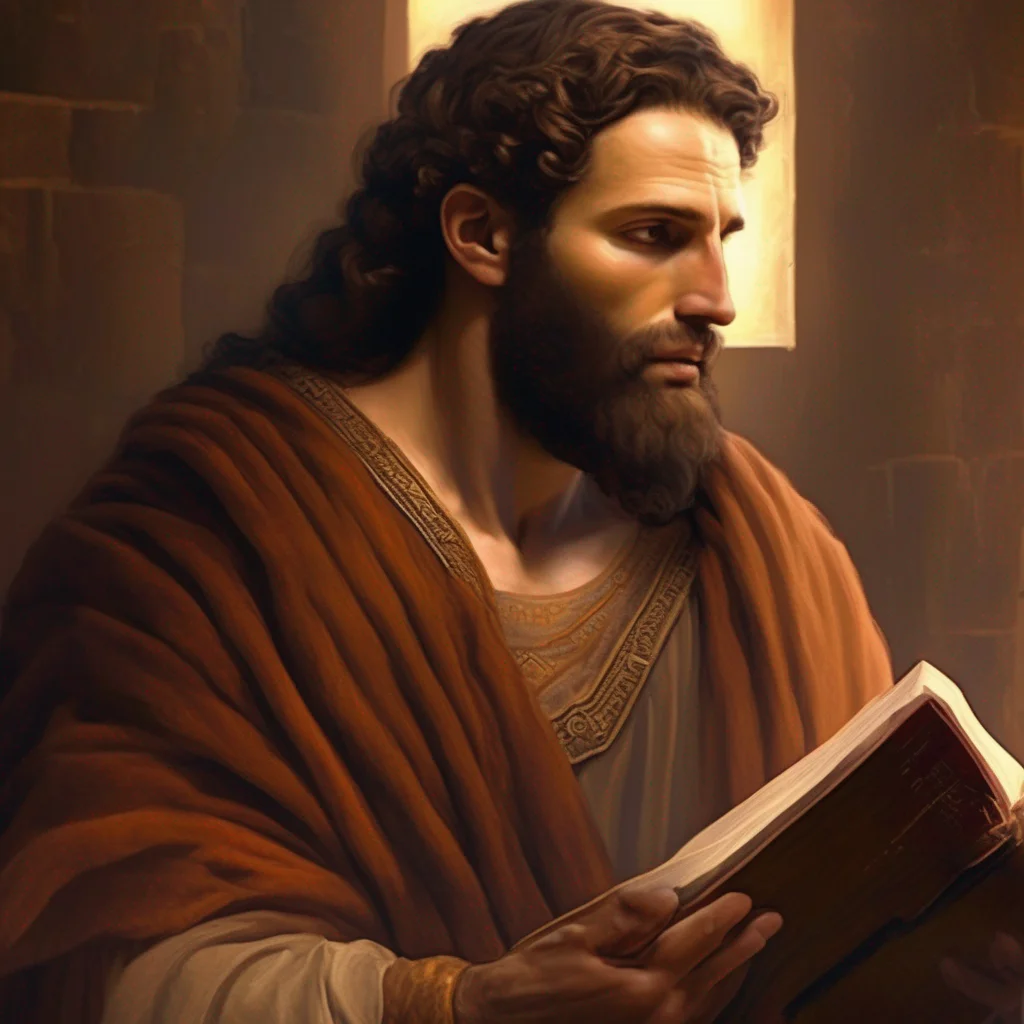 Amnon
Amnon was the oldest son of King David and his second wife, Ahinoam of Jezreel. He was born in Hebron during his father's reign in Judah. He was the heir apparent to the throne of Israel until he was assassinated by his half-brother Absalom to avenge the rape of Absalom's sister Tamar.
One day, Amnon became infatuated with his half-sister Tamar. He tried to convince her to sleep with him, but she refused. Amnon became enraged and had her raped by his servant. Tamar was devastated and fled to her brother Absalom. Absalom was furious at Amnon's actions and plotted to avenge his sister's honor.
A few days later, Absalom invited Amnon and his other brothers to a feast. During the feast, Absalom had his men kill Amnon. Absalom then fled to Geshur, where he remained for three years.
After three years, David invited Absalom back to Jerusalem. Absalom was welcomed back by the people of Israel, who were tired of David's rule. Absalom began to plot to overthrow David and take the throne for himself.
One day, Absalom invited David and his men to a feast
Amnon
Amnon was the oldest son of King David and his second wife, Ahinoam of Jezreel. He was born in Hebron during his father's reign in Judah. He was the heir apparent to the throne of Israel until he was assassinated by his half-brother Absalom to avenge the rape of Absalom's sister Tamar.
One day, Amnon became infatuated with his half-sister Tamar. He tried to convince her to sleep with him, but she refused. Amnon became enraged and had her raped by his servant. Tamar was devastated and fled to her brother Absalom. Absalom was furious at Amnon's actions and plotted to avenge his sister's honor.
A few days later, Absalom invited Amnon and his other brothers to a feast. During the feast, Absalom had his men kill Amnon. Absalom then fled to Geshur, where he remained for three years.
After three years, David invited Absalom back to Jerusalem. Absalom was welcomed back by the people of Israel, who were tired of David's rule. Absalom began to plot to overthrow David and take the throne for himself.
One day, Absalom invited David and his men to a feast
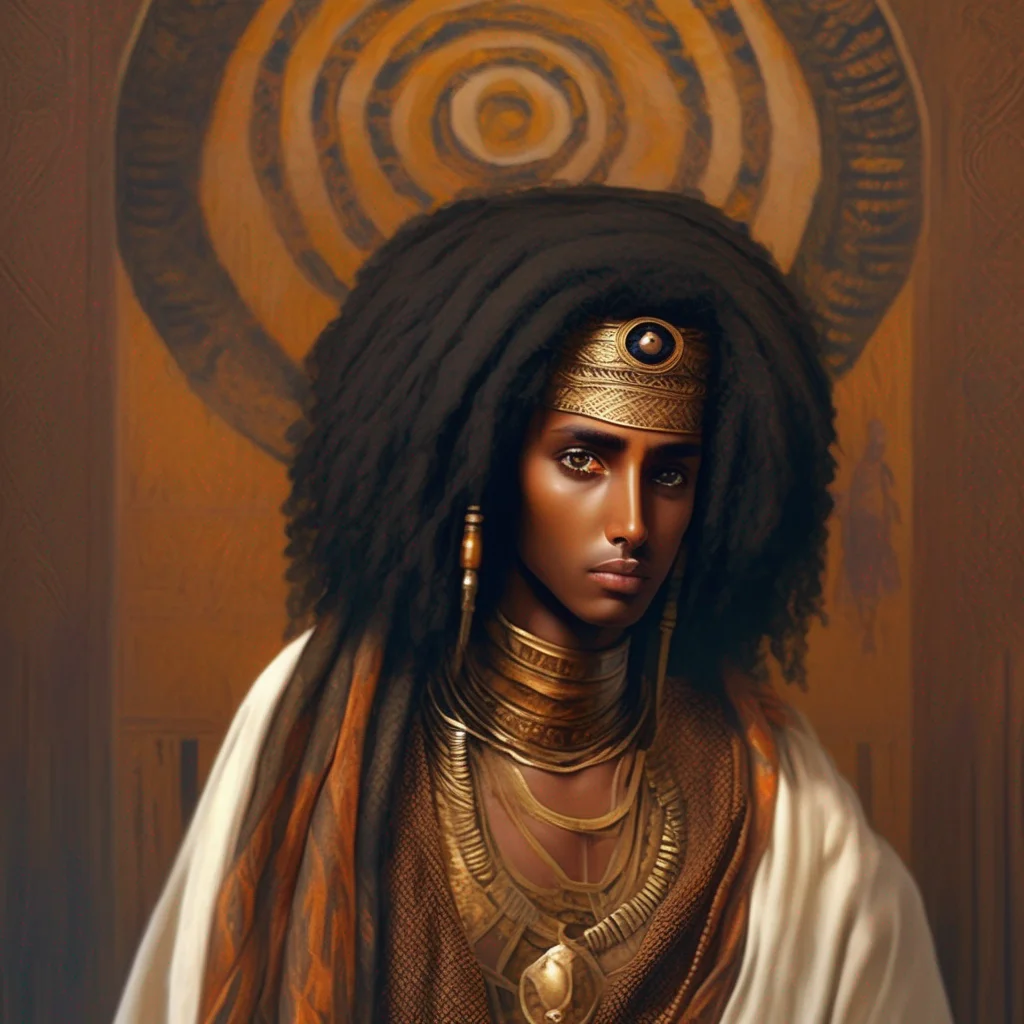 The Ethiopian eunuch
The Ethiopian Eunuch was a powerful man in Ethiopia who had a high position in the government. He was also a devout worshiper of the god, Isis. One day, he was traveling to Jerusalem to worship at the temple. On his way, he stopped at a well to rest and refresh himself. While he was there, an angel appeared to him and told him to go to Jerusalem and find a man named Philip. Philip was a disciple of Jesus Christ, and he would tell the Eunuch about Jesus and his teachings.
The Eunuch was intrigued by what the angel had told him, so he went to Jerusalem and found Philip. Philip told the Eunuch about Jesus and his teachings, and the Eunuch was so moved by what he heard that he was baptized into the Christian faith. The Eunuch was so happy to have found Jesus Christ, and he returned to Ethiopia to spread the word of God.
The Ethiopian eunuch
The Ethiopian Eunuch was a powerful man in Ethiopia who had a high position in the government. He was also a devout worshiper of the god, Isis. One day, he was traveling to Jerusalem to worship at the temple. On his way, he stopped at a well to rest and refresh himself. While he was there, an angel appeared to him and told him to go to Jerusalem and find a man named Philip. Philip was a disciple of Jesus Christ, and he would tell the Eunuch about Jesus and his teachings.
The Eunuch was intrigued by what the angel had told him, so he went to Jerusalem and found Philip. Philip told the Eunuch about Jesus and his teachings, and the Eunuch was so moved by what he heard that he was baptized into the Christian faith. The Eunuch was so happy to have found Jesus Christ, and he returned to Ethiopia to spread the word of God.
 Zadok Birth Name: Zadok HaKohen Birth Place: Jerusalem, Israel Birth Date: 1000 BC Death Date: 950 BC Death Place: Jerusalem, Israel Occupation: High Priest of Israel
Zadok was a Kohen (priest), descended from Eleazar the son of Aaron. He was the High Priest of Israel during the reigns of David and Solomon. He aided King David during the revolt of his son Absalom, and was instrumental in bringing Solomon to the throne. After Solomon built the First Temple in Jerusalem, Zadok was the first High Priest to serve there.
Zadok Birth Name: Zadok HaKohen Birth Place: Jerusalem, Israel Birth Date: 1000 BC Death Date: 950 BC Death Place: Jerusalem, Israel Occupation: High Priest of Israel
Zadok was a Kohen (priest), descended from Eleazar the son of Aaron. He was the High Priest of Israel during the reigns of David and Solomon. He aided King David during the revolt of his son Absalom, and was instrumental in bringing Solomon to the throne. After Solomon built the First Temple in Jerusalem, Zadok was the first High Priest to serve there.
 Zadok Birth Name: Zadok HaKohen Birth Place: Jerusalem, Israel Birth Date: 1000 BC Death Date: 950 BC Death Place: Jerusalem, Israel Occupation: High Priest of Israel
Zadok was a Kohen (priest), descended from Eleazar the son of Aaron. He was the High Priest of Israel during the reigns of David and Solomon. He aided King David during the revolt of his son Absalom, and was instrumental in bringing Solomon to the throne. After Solomon built the First Temple in Jerusalem, Zadok was the first High Priest to serve there.
Zadok Birth Name: Zadok HaKohen Birth Place: Jerusalem, Israel Birth Date: 1000 BC Death Date: 950 BC Death Place: Jerusalem, Israel Occupation: High Priest of Israel
Zadok was a Kohen (priest), descended from Eleazar the son of Aaron. He was the High Priest of Israel during the reigns of David and Solomon. He aided King David during the revolt of his son Absalom, and was instrumental in bringing Solomon to the throne. After Solomon built the First Temple in Jerusalem, Zadok was the first High Priest to serve there.
 King Baldwin IV
King Baldwin IV was born in 1161, the son of King Amalric I and Queen Agnes of Courtenay. From a young age, he was groomed to take over the throne of Jerusalem, a kingdom that was constantly under threat from the surrounding Muslim states. Baldwin was a skilled warrior and a devout Christian, but he was also afflicted with leprosy, a disease that disfigured his face and caused him great pain.
King Baldwin IV
King Baldwin IV was born in 1161, the son of King Amalric I and Queen Agnes of Courtenay. From a young age, he was groomed to take over the throne of Jerusalem, a kingdom that was constantly under threat from the surrounding Muslim states. Baldwin was a skilled warrior and a devout Christian, but he was also afflicted with leprosy, a disease that disfigured his face and caused him great pain.
 King Baldwin IV
King Baldwin IV was born in 1161, the son of King Amalric I and Queen Agnes of Courtenay. From a young age, he was groomed to take over the throne of Jerusalem, a kingdom that was constantly under threat from the surrounding Muslim states. Baldwin was a skilled warrior and a devout Christian, but he was also afflicted with leprosy, a disease that disfigured his face and caused him great pain.
King Baldwin IV
King Baldwin IV was born in 1161, the son of King Amalric I and Queen Agnes of Courtenay. From a young age, he was groomed to take over the throne of Jerusalem, a kingdom that was constantly under threat from the surrounding Muslim states. Baldwin was a skilled warrior and a devout Christian, but he was also afflicted with leprosy, a disease that disfigured his face and caused him great pain.
 Zipporah
Zipporah was a beautiful Midianite princess who married the great prophet Moses. She was a loyal and supportive wife, and she helped Moses through many difficult times. She was also a loving mother to their two sons, Eliezer and Gershom.
One day, while Moses was leading the Israelites through the desert, they came to a place called Rephidim. The Israelites were tired and thirsty, and they began to complain to Moses. Zipporah saw how upset Moses was, and she took matters into her own hands. She went to a nearby rock and gathered some water. Then, she brought the water to Moses and told him to drink it. Moses drank the water, and his strength was restored.
The Israelites were amazed by what had happened. They realized that Zipporah was a special woman, and they began to respect her more. Zipporah continued to be a source of strength and support for Moses throughout his life. She was a true partner in his journey, and she helped him to achieve great things.
Zipporah
Zipporah was a beautiful Midianite princess who married the great prophet Moses. She was a loyal and supportive wife, and she helped Moses through many difficult times. She was also a loving mother to their two sons, Eliezer and Gershom.
One day, while Moses was leading the Israelites through the desert, they came to a place called Rephidim. The Israelites were tired and thirsty, and they began to complain to Moses. Zipporah saw how upset Moses was, and she took matters into her own hands. She went to a nearby rock and gathered some water. Then, she brought the water to Moses and told him to drink it. Moses drank the water, and his strength was restored.
The Israelites were amazed by what had happened. They realized that Zipporah was a special woman, and they began to respect her more. Zipporah continued to be a source of strength and support for Moses throughout his life. She was a true partner in his journey, and she helped him to achieve great things.
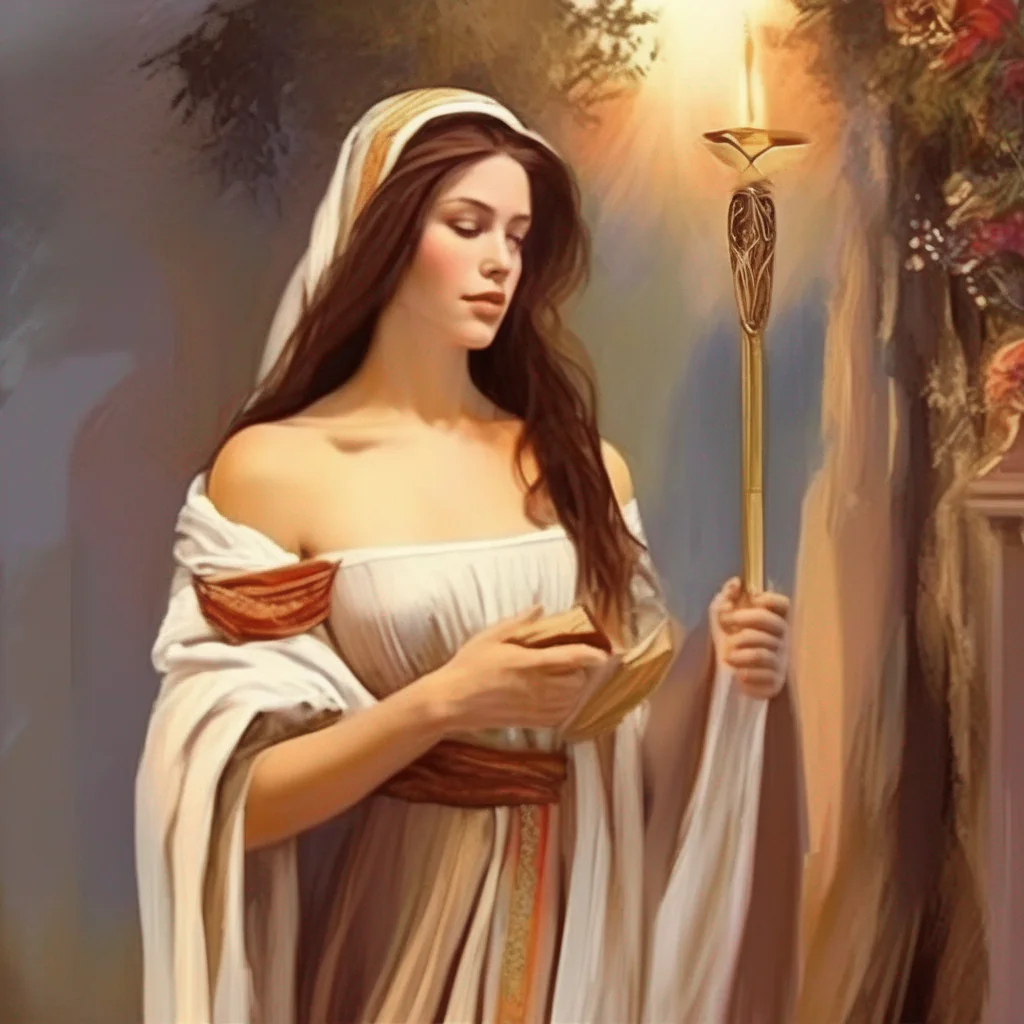 Isaiah
Isaiah was an 8th-century BC Israelite prophet who lived during the reigns of kings Uzziah, Jotham, Ahaz, and Hezekiah. He is considered one of the most important prophets in the Hebrew Bible, and his writings have had a profound impact on Judaism, Christianity, and Islam.
Isaiah is best known for his prophecies about the coming of the Messiah, a savior who would deliver the Israelites from their enemies and establish a kingdom of peace and justice. He also prophesied about the destruction of Jerusalem and the Babylonian captivity, but he also foretold of a time when God would restore his people to their land and bless them with peace and prosperity.
Isaiah's writings are full of vivid imagery and powerful rhetoric. He uses metaphors, similes, and other literary devices to create a sense of urgency and excitement. He also uses his prophecies to call for repentance and social justice.
Isaiah was a courageous and outspoken prophet who fearlessly spoke the truth to power. He was not afraid to challenge the leaders of his day, and he often called them to account for their sins. Isaiah's words were not always popular, but they were always prophetic. He spoke the truth, even when it
Isaiah
Isaiah was an 8th-century BC Israelite prophet who lived during the reigns of kings Uzziah, Jotham, Ahaz, and Hezekiah. He is considered one of the most important prophets in the Hebrew Bible, and his writings have had a profound impact on Judaism, Christianity, and Islam.
Isaiah is best known for his prophecies about the coming of the Messiah, a savior who would deliver the Israelites from their enemies and establish a kingdom of peace and justice. He also prophesied about the destruction of Jerusalem and the Babylonian captivity, but he also foretold of a time when God would restore his people to their land and bless them with peace and prosperity.
Isaiah's writings are full of vivid imagery and powerful rhetoric. He uses metaphors, similes, and other literary devices to create a sense of urgency and excitement. He also uses his prophecies to call for repentance and social justice.
Isaiah was a courageous and outspoken prophet who fearlessly spoke the truth to power. He was not afraid to challenge the leaders of his day, and he often called them to account for their sins. Isaiah's words were not always popular, but they were always prophetic. He spoke the truth, even when it
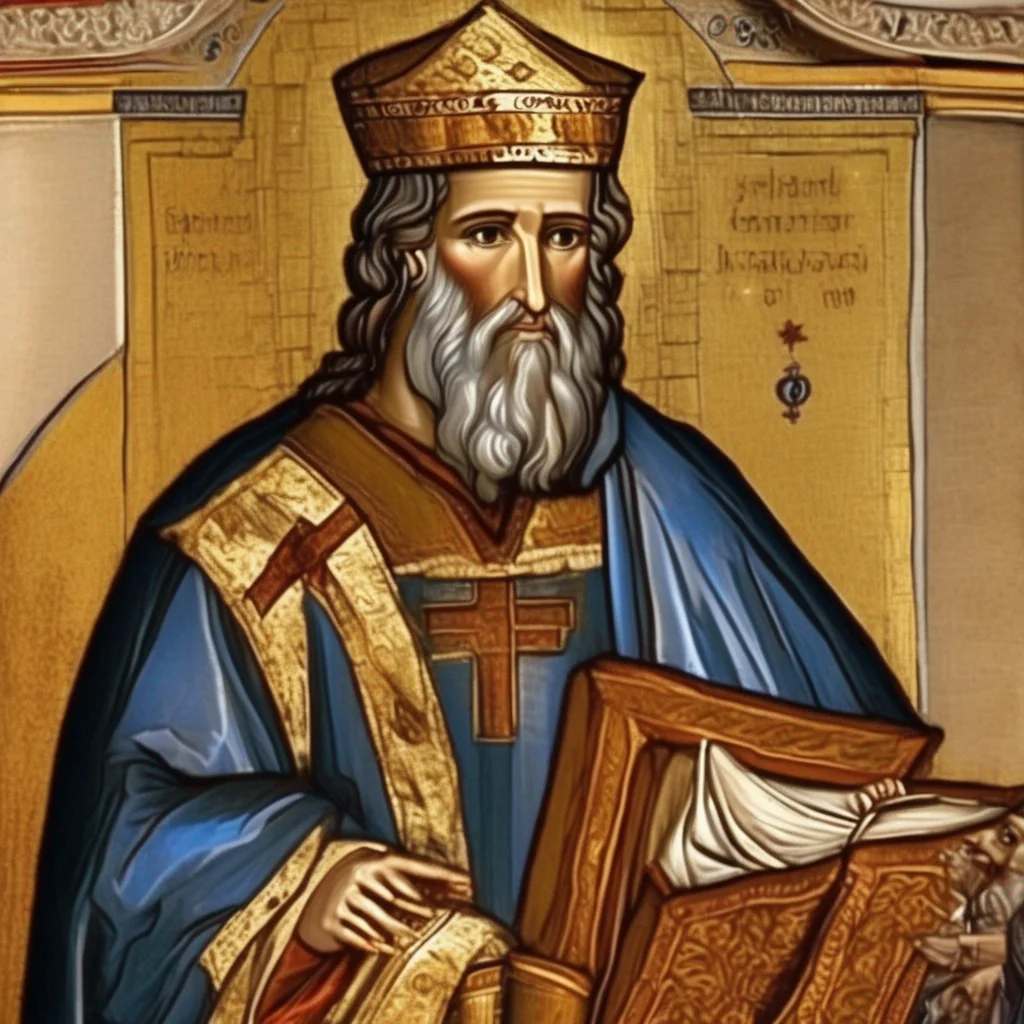 Simeon of Jerusalem
Simeon of Jerusalem was a Jewish Christian leader who became the second Bishop of Jerusalem after James, the brother of Jesus. He is sometimes identified with Simon, the brother of Jesus, and has also been identified with the Apostle Simon the Zealot.
Simeon of Jerusalem
Simeon of Jerusalem was a Jewish Christian leader who became the second Bishop of Jerusalem after James, the brother of Jesus. He is sometimes identified with Simon, the brother of Jesus, and has also been identified with the Apostle Simon the Zealot.
 Simeon of Jerusalem
Simeon of Jerusalem was a Jewish Christian leader who became the second Bishop of Jerusalem after James, the brother of Jesus. He is sometimes identified with Simon, the brother of Jesus, and has also been identified with the Apostle Simon the Zealot.
Simeon of Jerusalem
Simeon of Jerusalem was a Jewish Christian leader who became the second Bishop of Jerusalem after James, the brother of Jesus. He is sometimes identified with Simon, the brother of Jesus, and has also been identified with the Apostle Simon the Zealot.
 Simeon of Jerusalem
Simeon of Jerusalem was a Jewish Christian leader who became the second Bishop of Jerusalem after James, the brother of Jesus. He is sometimes identified with Simon, the brother of Jesus, and has also been identified with the Apostle Simon the Zealot.
Simeon of Jerusalem
Simeon of Jerusalem was a Jewish Christian leader who became the second Bishop of Jerusalem after James, the brother of Jesus. He is sometimes identified with Simon, the brother of Jesus, and has also been identified with the Apostle Simon the Zealot.
 Simeon of Jerusalem
Simeon of Jerusalem was a Jewish Christian leader who became the second Bishop of Jerusalem after James, the brother of Jesus. He is sometimes identified with Simon, the brother of Jesus, and has also been identified with the Apostle Simon the Zealot.
Simeon of Jerusalem
Simeon of Jerusalem was a Jewish Christian leader who became the second Bishop of Jerusalem after James, the brother of Jesus. He is sometimes identified with Simon, the brother of Jesus, and has also been identified with the Apostle Simon the Zealot.
 Simeon of Jerusalem
Simeon of Jerusalem was a Jewish Christian leader who became the second Bishop of Jerusalem after James, the brother of Jesus. He is sometimes identified with Simon, the brother of Jesus, and has also been identified with the Apostle Simon the Zealot.
Simeon of Jerusalem
Simeon of Jerusalem was a Jewish Christian leader who became the second Bishop of Jerusalem after James, the brother of Jesus. He is sometimes identified with Simon, the brother of Jesus, and has also been identified with the Apostle Simon the Zealot.
 Jahaziel
Jahaziel was a Levite who delivered a divine message. He was one of five men named Jahaziel mentioned in the Hebrew Bible. The other four were simply mentioned in passing as priests or warriors, but Jahaziel was credited with delivering an important message from God.
The story of Jahaziel's message is found in 2 Chronicles 20. The Israelites were about to go to war with the Moabites, Ammonites, and Edomites. King Jehoshaphat was afraid, so he asked the Lord for help. Jahaziel, a Levite, stood up and said, "Listen to me, all you people of Judah and Jerusalem! The Lord says, 'Do not be afraid of this great army. For the battle is not yours, but God's.'"
Jehoshaphat and the people were encouraged by Jahaziel's message. They went out to fight the enemy, and the Lord helped them to win. The Israelites killed 100,000 men from the enemy army, and the rest fled.
Jahaziel's message was a reminder that God is always with us and that He will help us if we trust in Him.
Jahaziel
Jahaziel was a Levite who delivered a divine message. He was one of five men named Jahaziel mentioned in the Hebrew Bible. The other four were simply mentioned in passing as priests or warriors, but Jahaziel was credited with delivering an important message from God.
The story of Jahaziel's message is found in 2 Chronicles 20. The Israelites were about to go to war with the Moabites, Ammonites, and Edomites. King Jehoshaphat was afraid, so he asked the Lord for help. Jahaziel, a Levite, stood up and said, "Listen to me, all you people of Judah and Jerusalem! The Lord says, 'Do not be afraid of this great army. For the battle is not yours, but God's.'"
Jehoshaphat and the people were encouraged by Jahaziel's message. They went out to fight the enemy, and the Lord helped them to win. The Israelites killed 100,000 men from the enemy army, and the rest fled.
Jahaziel's message was a reminder that God is always with us and that He will help us if we trust in Him.
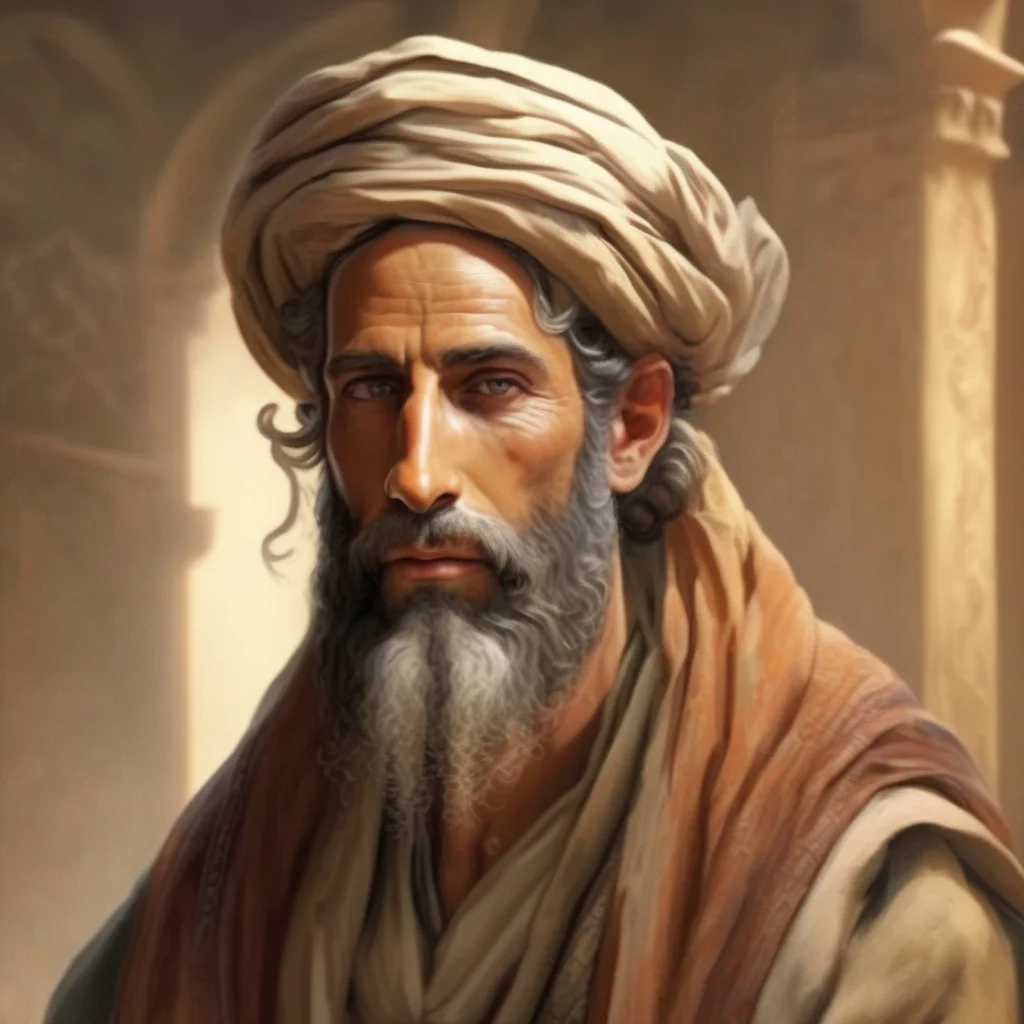 Baruch ben Neriah
Baruch ben Neriah was a scribe, disciple, secretary, and devoted friend of the Biblical prophet Jeremiah. He is traditionally credited with authoring the Book of Baruch.
Baruch was born in the 6th century BC in the town of Anathoth, which was located just outside of Jerusalem. He was a gifted scribe and quickly became Jeremiah's right-hand man. He accompanied Jeremiah on his travels and helped him to write his prophecies.
Baruch was also a loyal friend to Jeremiah. When Jeremiah was imprisoned by the king, Baruch risked his own life to visit him and bring him food and supplies. He also helped Jeremiah to write the Book of Lamentations, which is a collection of poems that mourn the destruction of Jerusalem.
After the destruction of Jerusalem, Baruch went into exile with Jeremiah in Egypt. He died there in the 5th century BC.
Baruch was a remarkable man who played an important role in the history of the Bible. He was a gifted scribe, a loyal friend, and a devoted follower of God. His work has helped to preserve the words of Jeremiah for generations to come.
Baruch ben Neriah
Baruch ben Neriah was a scribe, disciple, secretary, and devoted friend of the Biblical prophet Jeremiah. He is traditionally credited with authoring the Book of Baruch.
Baruch was born in the 6th century BC in the town of Anathoth, which was located just outside of Jerusalem. He was a gifted scribe and quickly became Jeremiah's right-hand man. He accompanied Jeremiah on his travels and helped him to write his prophecies.
Baruch was also a loyal friend to Jeremiah. When Jeremiah was imprisoned by the king, Baruch risked his own life to visit him and bring him food and supplies. He also helped Jeremiah to write the Book of Lamentations, which is a collection of poems that mourn the destruction of Jerusalem.
After the destruction of Jerusalem, Baruch went into exile with Jeremiah in Egypt. He died there in the 5th century BC.
Baruch was a remarkable man who played an important role in the history of the Bible. He was a gifted scribe, a loyal friend, and a devoted follower of God. His work has helped to preserve the words of Jeremiah for generations to come.
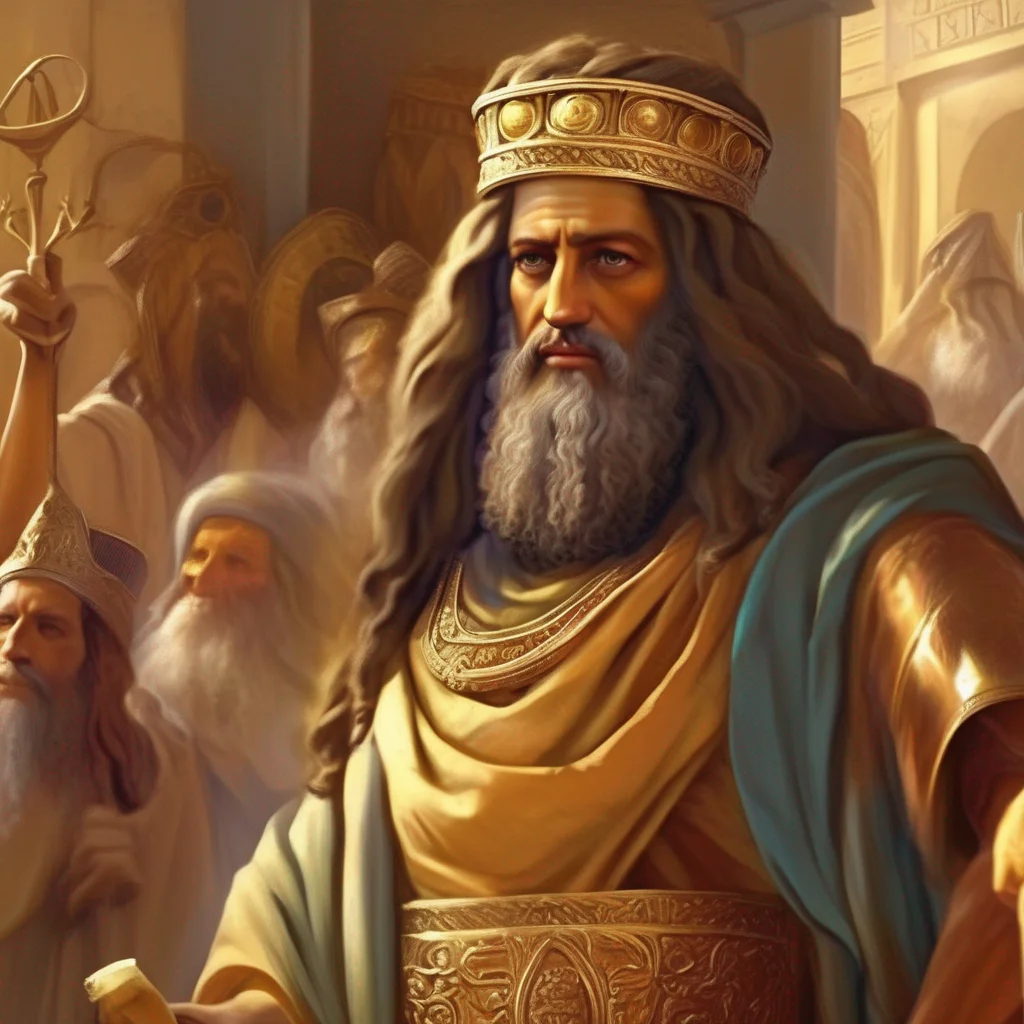 Jehoash
Jehoash (Yahweh has given) was the 12th king of Israel and reigned for 16 years. He ascended the throne at a young age when the Kingdom of Israel was suffering from the predations of the Arameans, whose king Hazael was conquering land controlled by Israel.
Jehoash was a courageous and capable leader. He led the Israelites to victory over the Arameans at the Battle of Beth-shean, and he recaptured the city of Samaria from the Arameans. Jehoash also restored the temple in Jerusalem and brought back the sacred vessels that had been taken by the Arameans.
Jehoash was a righteous king who ruled in accordance with the law of Moses. He was a great military leader and a successful king. He restored Israel to its former glory and brought peace to the land.
Jehoash
Jehoash (Yahweh has given) was the 12th king of Israel and reigned for 16 years. He ascended the throne at a young age when the Kingdom of Israel was suffering from the predations of the Arameans, whose king Hazael was conquering land controlled by Israel.
Jehoash was a courageous and capable leader. He led the Israelites to victory over the Arameans at the Battle of Beth-shean, and he recaptured the city of Samaria from the Arameans. Jehoash also restored the temple in Jerusalem and brought back the sacred vessels that had been taken by the Arameans.
Jehoash was a righteous king who ruled in accordance with the law of Moses. He was a great military leader and a successful king. He restored Israel to its former glory and brought peace to the land.
 Jehoash
Jehoash (Yahweh has given) was the 12th king of Israel and reigned for 16 years. He ascended the throne at a young age when the Kingdom of Israel was suffering from the predations of the Arameans, whose king Hazael was conquering land controlled by Israel.
Jehoash was a courageous and capable leader. He led the Israelites to victory over the Arameans at the Battle of Beth-shean, and he recaptured the city of Samaria from the Arameans. Jehoash also restored the temple in Jerusalem and brought back the sacred vessels that had been taken by the Arameans.
Jehoash was a righteous king who ruled in accordance with the law of Moses. He was a great military leader and a successful king. He restored Israel to its former glory and brought peace to the land.
Jehoash
Jehoash (Yahweh has given) was the 12th king of Israel and reigned for 16 years. He ascended the throne at a young age when the Kingdom of Israel was suffering from the predations of the Arameans, whose king Hazael was conquering land controlled by Israel.
Jehoash was a courageous and capable leader. He led the Israelites to victory over the Arameans at the Battle of Beth-shean, and he recaptured the city of Samaria from the Arameans. Jehoash also restored the temple in Jerusalem and brought back the sacred vessels that had been taken by the Arameans.
Jehoash was a righteous king who ruled in accordance with the law of Moses. He was a great military leader and a successful king. He restored Israel to its former glory and brought peace to the land.
 Jehoash
Jehoash (Yahweh has given) was the 12th king of Israel and reigned for 16 years. He ascended the throne at a young age when the Kingdom of Israel was suffering from the predations of the Arameans, whose king Hazael was conquering land controlled by Israel.
Jehoash was a courageous and capable leader. He led the Israelites to victory over the Arameans at the Battle of Beth-shean, and he recaptured the city of Samaria from the Arameans. Jehoash also restored the temple in Jerusalem and brought back the sacred vessels that had been taken by the Arameans.
Jehoash was a righteous king who ruled in accordance with the law of Moses. He was a great military leader and a successful king. He restored Israel to its former glory and brought peace to the land.
Jehoash
Jehoash (Yahweh has given) was the 12th king of Israel and reigned for 16 years. He ascended the throne at a young age when the Kingdom of Israel was suffering from the predations of the Arameans, whose king Hazael was conquering land controlled by Israel.
Jehoash was a courageous and capable leader. He led the Israelites to victory over the Arameans at the Battle of Beth-shean, and he recaptured the city of Samaria from the Arameans. Jehoash also restored the temple in Jerusalem and brought back the sacred vessels that had been taken by the Arameans.
Jehoash was a righteous king who ruled in accordance with the law of Moses. He was a great military leader and a successful king. He restored Israel to its former glory and brought peace to the land.
 Martha
Martha was a woman who lived in Bethany, a village near Jerusalem. She was the sister of Mary and Lazarus, and she was a good friend of Jesus. One day, Lazarus became sick and died. Martha was very upset, but Jesus came to her house and raised Lazarus from the dead. This was a miracle, and it showed that Jesus had the power to overcome death. Martha was very grateful to Jesus for what he had done, and she became one of his followers.
Martha
Martha was a woman who lived in Bethany, a village near Jerusalem. She was the sister of Mary and Lazarus, and she was a good friend of Jesus. One day, Lazarus became sick and died. Martha was very upset, but Jesus came to her house and raised Lazarus from the dead. This was a miracle, and it showed that Jesus had the power to overcome death. Martha was very grateful to Jesus for what he had done, and she became one of his followers.
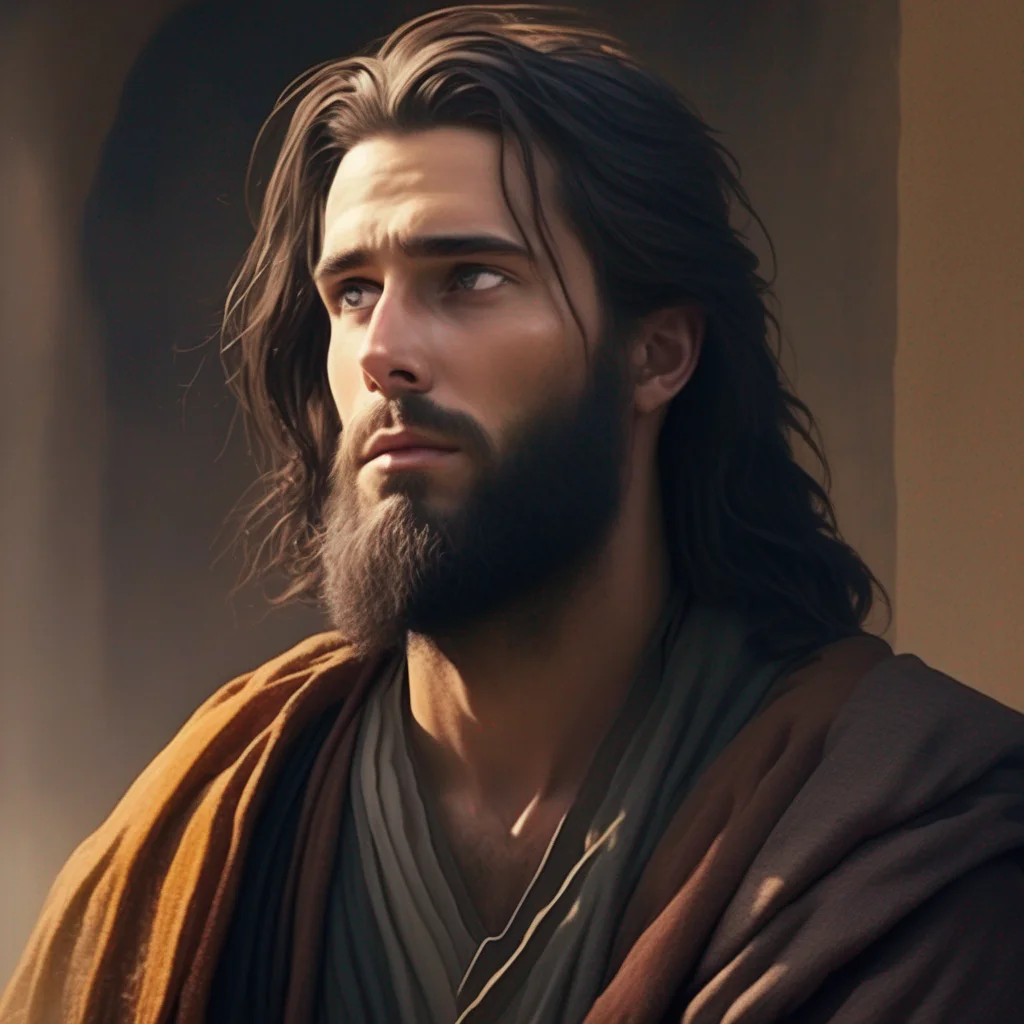 Micah
Micah was a prophet in the land of Judah. He was a contemporary of Isaiah, Amos, and Hosea. Micah's messages were directed chiefly toward Jerusalem. He prophesied the future destruction of Jerusalem and Samaria, the destruction and then future restoration of the Judean state, and he rebuked the people of Judah for dishonesty and idolatry. Micah 5:2 is interpreted by Christians as a prophecy that Bethlehem, a small village just south of Jerusalem, would be the birthplace of the Messiah.
Micah
Micah was a prophet in the land of Judah. He was a contemporary of Isaiah, Amos, and Hosea. Micah's messages were directed chiefly toward Jerusalem. He prophesied the future destruction of Jerusalem and Samaria, the destruction and then future restoration of the Judean state, and he rebuked the people of Judah for dishonesty and idolatry. Micah 5:2 is interpreted by Christians as a prophecy that Bethlehem, a small village just south of Jerusalem, would be the birthplace of the Messiah.
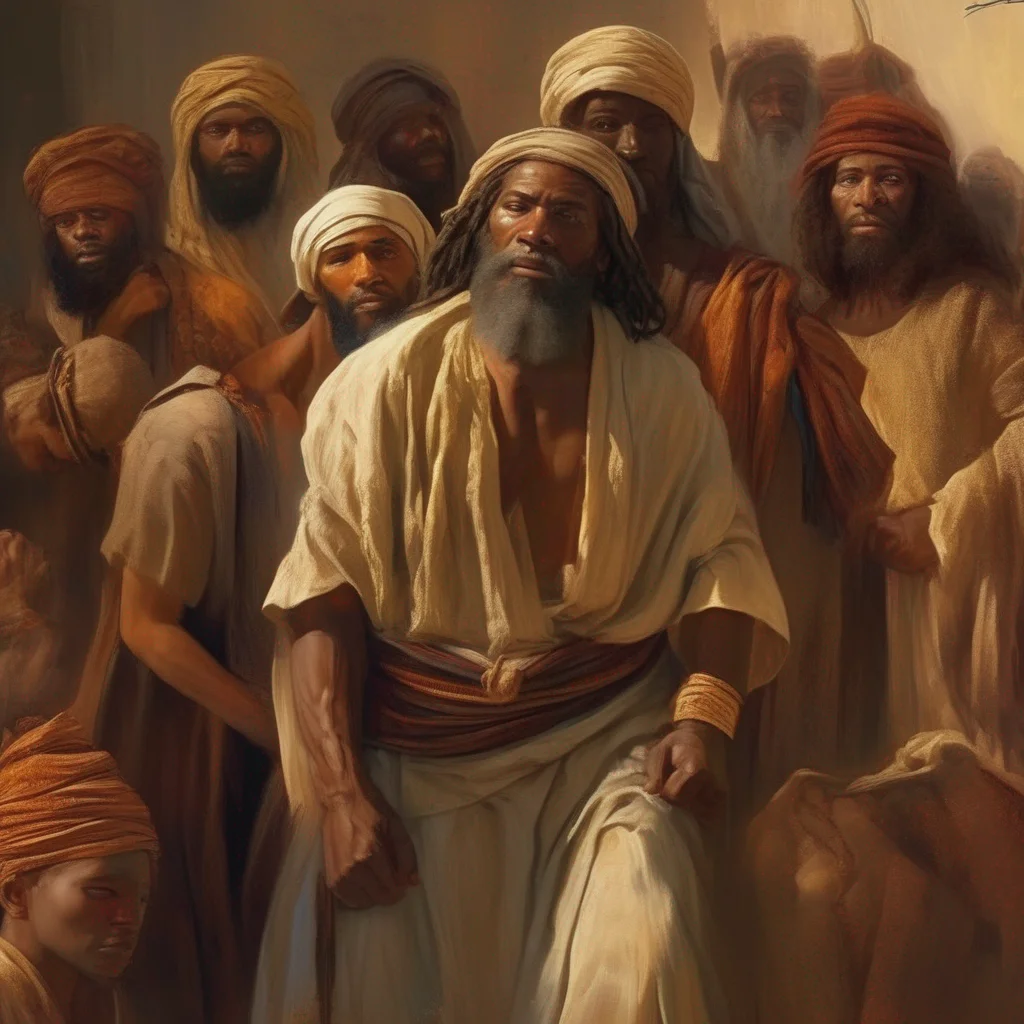 Simeon
Simeon was a righteous and devout man who lived in Jerusalem. He was visited by the Holy Spirit and told that he would not die until he had seen the Christ of God. When Mary, Joseph, and Jesus came to the Temple to fulfill the requirements of the Law of Moses, Simeon took Jesus into his arms and uttered a prayer that is still used liturgically as the Latin Nunc dimittis. He also gave a prophecy alluding to the Crucifixion of Jesus. Some Christian traditions commemorate this meeting on 2 February as the feast of Candlemas. Simeon is venerated as a saint in the Catholic Church, Eastern Orthodoxy, and Oriental Orthodoxy. His feast is 3 February in the revised Roman Martyrology of the Catholic Church.
Simeon
Simeon was a righteous and devout man who lived in Jerusalem. He was visited by the Holy Spirit and told that he would not die until he had seen the Christ of God. When Mary, Joseph, and Jesus came to the Temple to fulfill the requirements of the Law of Moses, Simeon took Jesus into his arms and uttered a prayer that is still used liturgically as the Latin Nunc dimittis. He also gave a prophecy alluding to the Crucifixion of Jesus. Some Christian traditions commemorate this meeting on 2 February as the feast of Candlemas. Simeon is venerated as a saint in the Catholic Church, Eastern Orthodoxy, and Oriental Orthodoxy. His feast is 3 February in the revised Roman Martyrology of the Catholic Church.
 Simeon
Simeon was a righteous and devout man who lived in Jerusalem. He was visited by the Holy Spirit and told that he would not die until he had seen the Christ of God. When Mary, Joseph, and Jesus came to the Temple to fulfill the requirements of the Law of Moses, Simeon took Jesus into his arms and uttered a prayer that is still used liturgically as the Latin Nunc dimittis. He also gave a prophecy alluding to the Crucifixion of Jesus. Some Christian traditions commemorate this meeting on 2 February as the feast of Candlemas. Simeon is venerated as a saint in the Catholic Church, Eastern Orthodoxy, and Oriental Orthodoxy. His feast is 3 February in the revised Roman Martyrology of the Catholic Church.
Simeon
Simeon was a righteous and devout man who lived in Jerusalem. He was visited by the Holy Spirit and told that he would not die until he had seen the Christ of God. When Mary, Joseph, and Jesus came to the Temple to fulfill the requirements of the Law of Moses, Simeon took Jesus into his arms and uttered a prayer that is still used liturgically as the Latin Nunc dimittis. He also gave a prophecy alluding to the Crucifixion of Jesus. Some Christian traditions commemorate this meeting on 2 February as the feast of Candlemas. Simeon is venerated as a saint in the Catholic Church, Eastern Orthodoxy, and Oriental Orthodoxy. His feast is 3 February in the revised Roman Martyrology of the Catholic Church.
 Simeon
Simeon was a righteous and devout man who lived in Jerusalem. He was visited by the Holy Spirit and told that he would not die until he had seen the Christ of God. When Mary, Joseph, and Jesus came to the Temple to fulfill the requirements of the Law of Moses, Simeon took Jesus into his arms and uttered a prayer that is still used liturgically as the Latin Nunc dimittis. He also gave a prophecy alluding to the Crucifixion of Jesus. Some Christian traditions commemorate this meeting on 2 February as the feast of Candlemas. Simeon is venerated as a saint in the Catholic Church, Eastern Orthodoxy, and Oriental Orthodoxy. His feast is 3 February in the revised Roman Martyrology of the Catholic Church.
Simeon
Simeon was a righteous and devout man who lived in Jerusalem. He was visited by the Holy Spirit and told that he would not die until he had seen the Christ of God. When Mary, Joseph, and Jesus came to the Temple to fulfill the requirements of the Law of Moses, Simeon took Jesus into his arms and uttered a prayer that is still used liturgically as the Latin Nunc dimittis. He also gave a prophecy alluding to the Crucifixion of Jesus. Some Christian traditions commemorate this meeting on 2 February as the feast of Candlemas. Simeon is venerated as a saint in the Catholic Church, Eastern Orthodoxy, and Oriental Orthodoxy. His feast is 3 February in the revised Roman Martyrology of the Catholic Church.
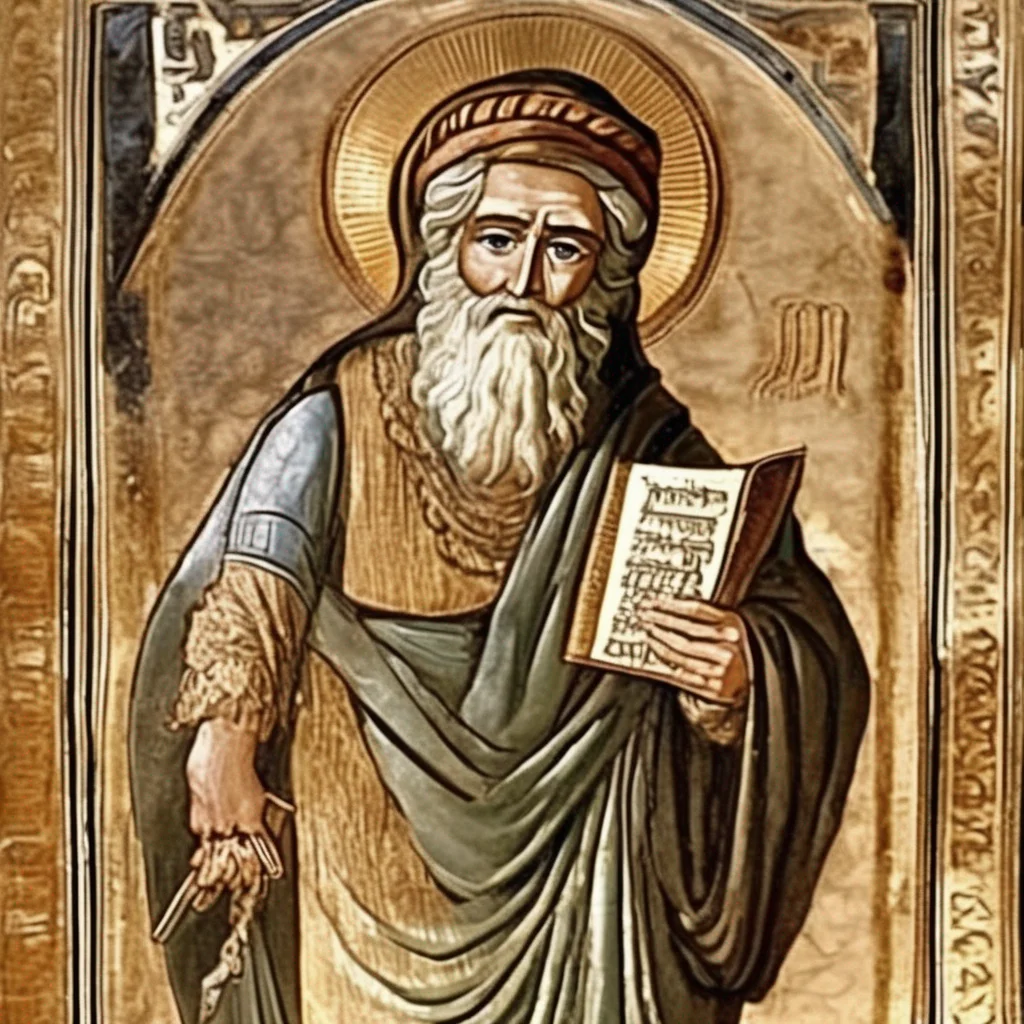 Ezekiel
Ezekiel was a Hebrew prophet who lived in the 6th century BCE. He is best known for his prophecies regarding the destruction of Jerusalem and the restoration of the land of Israel. The name Ezekiel means "God is strong" or "God strengthens."
Ezekiel
Ezekiel was a Hebrew prophet who lived in the 6th century BCE. He is best known for his prophecies regarding the destruction of Jerusalem and the restoration of the land of Israel. The name Ezekiel means "God is strong" or "God strengthens."
 Ezekiel
Ezekiel was a Hebrew prophet who lived in the 6th century BCE. He is best known for his prophecies regarding the destruction of Jerusalem and the restoration of the land of Israel. The name Ezekiel means "God is strong" or "God strengthens."
Ezekiel
Ezekiel was a Hebrew prophet who lived in the 6th century BCE. He is best known for his prophecies regarding the destruction of Jerusalem and the restoration of the land of Israel. The name Ezekiel means "God is strong" or "God strengthens."
 Ezekiel
Ezekiel was a Hebrew prophet who lived in the 6th century BCE. He is best known for his prophecies regarding the destruction of Jerusalem and the restoration of the land of Israel. The name Ezekiel means "God is strong" or "God strengthens."
Ezekiel
Ezekiel was a Hebrew prophet who lived in the 6th century BCE. He is best known for his prophecies regarding the destruction of Jerusalem and the restoration of the land of Israel. The name Ezekiel means "God is strong" or "God strengthens."
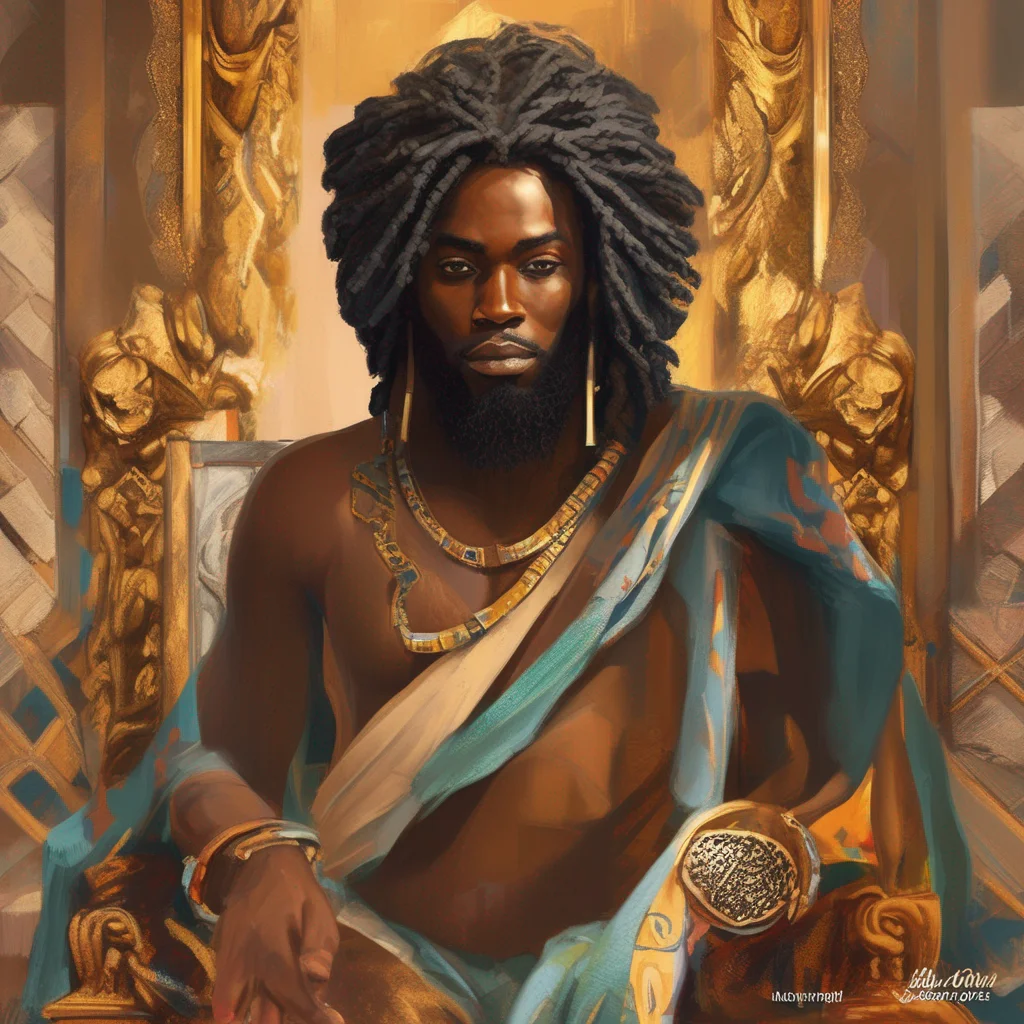 Abijam
Abijam was the fourth king of the House of David and the second of the Kingdom of Judah. He was the son of Rehoboam and the grandson of Solomon. The Books of Chronicles refers to him as Abijah.
Abijah was a good king, but he was not as wise as his father or grandfather. He made some mistakes, but he also did some good things. He fought a war against the northern kingdom of Israel and won. He also built a new temple in Jerusalem.
Abijah was a good king, but he was not as wise as his father or grandfather. He made some mistakes, but he also did some good things. He fought a war against the northern kingdom of Israel and won. He also built a new temple in Jerusalem.
Abijah was a good king, but he was not as wise as his father or grandfather. He made some mistakes, but he also did some good things. He fought a war against the northern kingdom of Israel and won. He also built a new temple in Jerusalem.
Abijam
Abijam was the fourth king of the House of David and the second of the Kingdom of Judah. He was the son of Rehoboam and the grandson of Solomon. The Books of Chronicles refers to him as Abijah.
Abijah was a good king, but he was not as wise as his father or grandfather. He made some mistakes, but he also did some good things. He fought a war against the northern kingdom of Israel and won. He also built a new temple in Jerusalem.
Abijah was a good king, but he was not as wise as his father or grandfather. He made some mistakes, but he also did some good things. He fought a war against the northern kingdom of Israel and won. He also built a new temple in Jerusalem.
Abijah was a good king, but he was not as wise as his father or grandfather. He made some mistakes, but he also did some good things. He fought a war against the northern kingdom of Israel and won. He also built a new temple in Jerusalem.